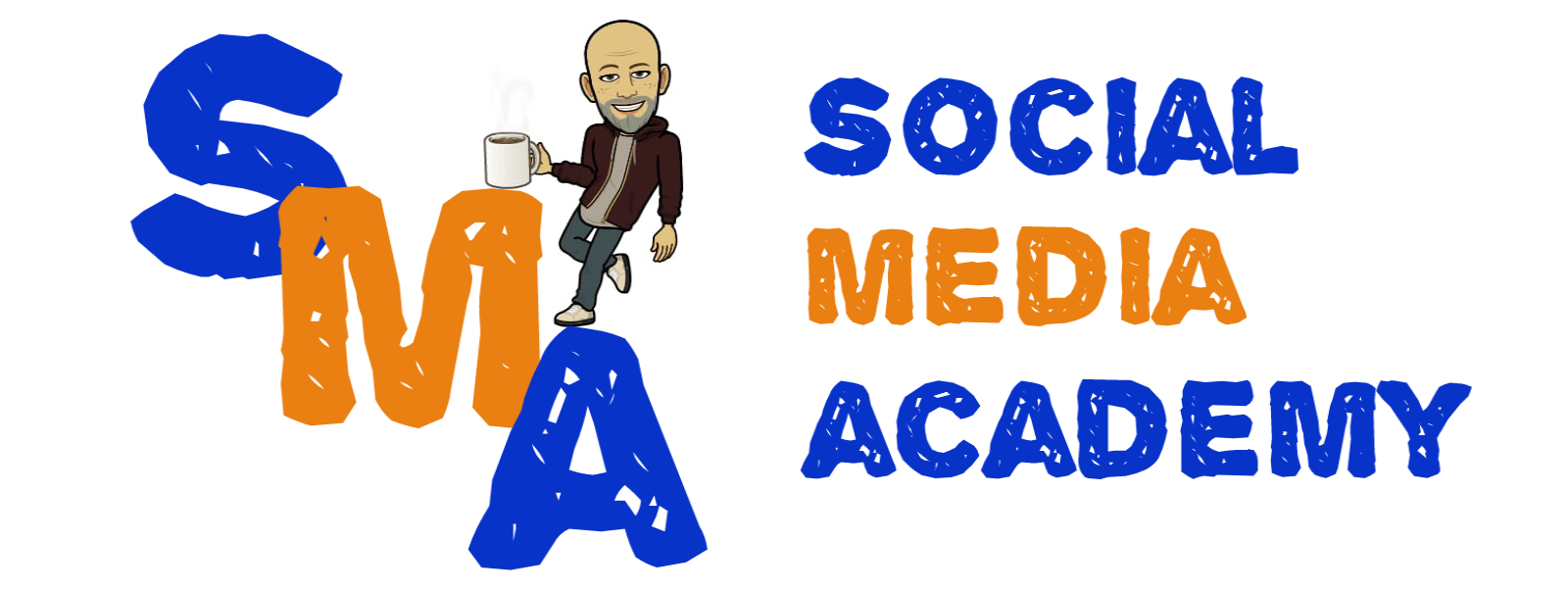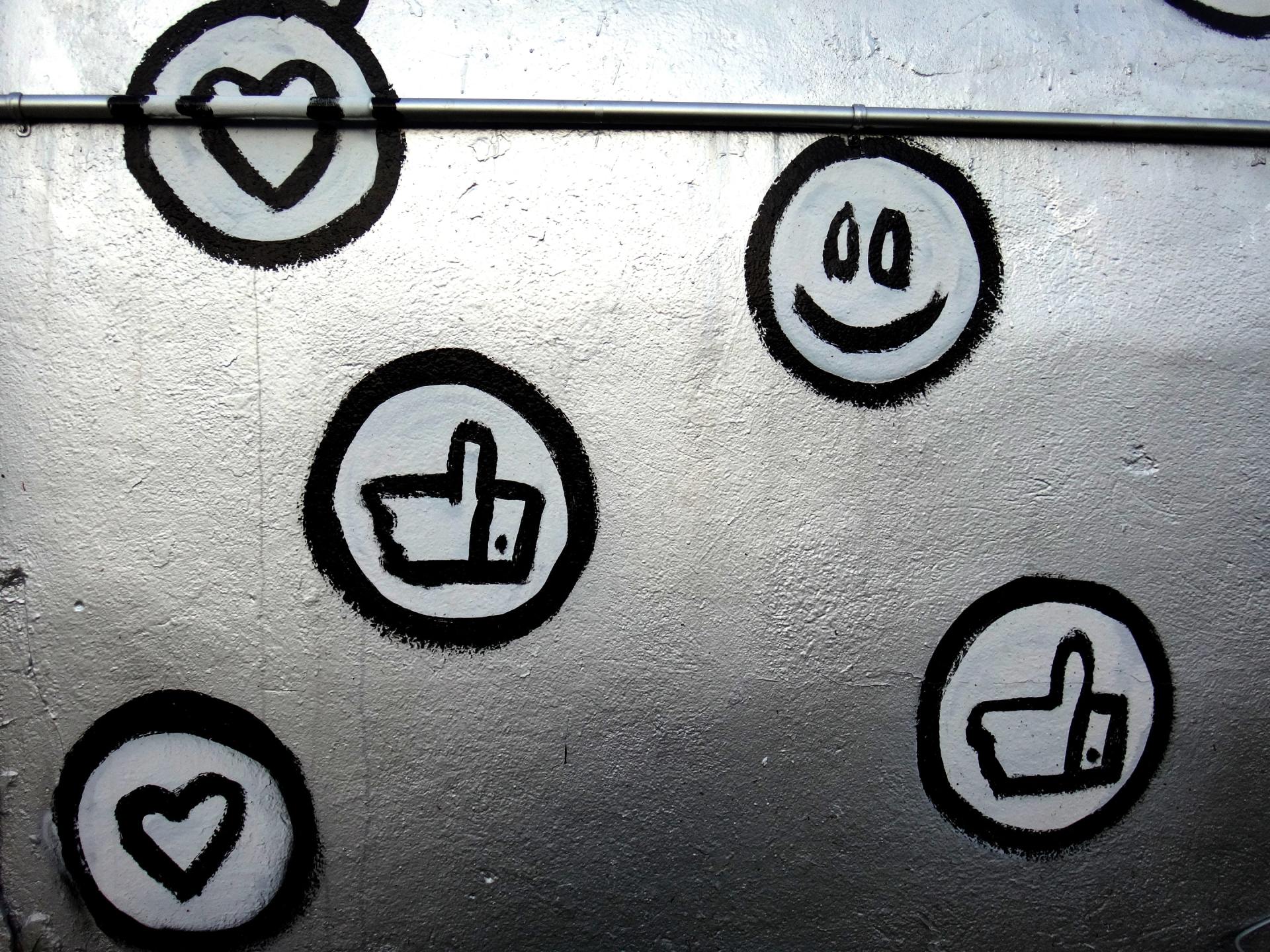Blog

The world of online search is changing, and you might have heard a lot of buzz about AI (Artificial Intelligence) and how it’s shaking things up. If terms like ‘SEO’ and ‘LLM’ sound like a foreign language, don’t worry! We’re here to break down what this all means for your business and how you can use these changes to your advantage. The days of simply stuffing your website with keywords are long gone. The new frontier is about ‘mutual information’ – a fancy way of saying how much information your brand supplies to the internet. The more a search engine knows about you, the more visible you will be. Here's how you can make sure your business stays ahead of the curve: 1. Pinpoint Your Niche and Position Your Brand With AI becoming the default for search, traffic is becoming more splintered. This is actually great news for smaller, more specialised businesses! Rather than trying to be everything to everyone, focus on what makes you unique. What specific problems do you solve? You can even use AI to see how it perceives your business. Try searching for your brand on a tool like SemRush's AI branding review, or simply ask a public Chat AI what they know about your business. This will give you a good starting point for identifying your strengths and how you are perceived online. 2. Provide Key Information to the Networks Think of your website and all your online content as a package of information about your business. This is where E-E-A-T comes in – Experience, Expertise, Authoritativeness, and Trustworthiness . AI models are looking for specific information that matches a user's search query. Including and excluding certain details will make a huge difference to your visibility. Think about all the places your business is mentioned online. This includes your Google and LinkedIn reviews, mentions in PR articles, podcasts, blogs, and local directories. All of this data helps build a picture of your brand's authority. Even your social media profiles are now indexed and contribute to this. If you serve a national audience, make sure this is consistent across all your listings. 3. Be Known, Be Mentioned, Be the Source In this new AI-driven landscape, it’s harder to cheat the system. The focus is on your brand’s reputation. AI search engines are looking for evidence that people are talking about you and that you are a credible source of information. The key is to: Be Mentioned: Get other websites to talk about you. Be the Source: Become a trusted provider of information in your field. Be Known: Have a clear and consistent brand identity. Be Talked About: Encourage people to share their experiences with your business. Be Famous: Build a reputation relative to your brand’s size and niche. 4. The Hidden Factors You Can Influence To quickly increase your visibility, here are a few things you can do: Be Consistent: Ensure your business information is the same everywhere. This includes your Name, Address, and Phone Number (NAP). Swap Mentions: Work with other businesses to get reciprocal links or mentions on each other's websites. Focus on Brand Positioning: The focus is no longer just on keywords, but on clearly defining what you do, who you do it for, and why you do it. Leverage Employee Personas: Your employees can be your biggest advocates. Encourage them to build their own professional brands through writing, podcasts, and social media. This builds authority and brings in leads for your business. 5. Writing Content for AI Discovery When creating content, write naturally and clearly. AI is intelligent and understands the nuances of language. Treat your web pages as 'information packages' . Provide all the vital information a customer might need, such as directions, parking details, or opening hours. Use 'attributes' . AI understands specific information, such as the materials you use for your products or the specific services you offer. The value of being at the top of a traditional search ranking page is decreasing as more people use AI and LLMs to find what they need. However, by focusing on being a trusted, well-known, and informative brand, you can ensure your business remains visible and relevant in this exciting new era.

If you're a startup, you're juggling a million things, often with limited time and budget. You've probably heard about 'AI' and perhaps felt a bit overwhelmed by it all. Well, consider this your straightforward guide! We're not here to talk about sci-fi; we're here to show you how simple, everyday AI tools can genuinely streamline your marketing and business operations. Think of AI as your new, incredibly efficient assistant. While there are countless tools out there, we've picked 6 fantastic ones that can give any new business clear focus, make your life easier, and your workflow much smoother. Let's dive into how these tools can help you work smarter, not harder. Top 6 Tips for Using AI in Your Business AI might sound a bit daunting, but it's really just smart tools designed to make your life easier. Think of it as having a super-efficient assistant for your business. Here are our top tips, showing you how to get started with some fantastic tools: Tip 1: Use AI to Kickstart Your Ideas & Content. The Idea: AI is brilliant for beating writer's block or getting a fresh perspective. Don't know what to post on social media? Need a quick email draft? AI can give you a strong starting point in seconds. How it Helps (Tool: Gemini): Gemini is like your clever brainstorming partner. Just ask it a question or give it a topic, and it can whip up social media captions, blog ideas, or even short email drafts for you to adapt. It's super easy to use and a great way to get moving. Tip 2: Understand Exactly What Your Customers Are Asking. The Idea: Knowing what questions your potential customers are typing into Google gives you a massive advantage. It helps you create content that they're actively searching for, making your marketing much more effective. How it Helps (Tool: Answer The Public): Answer The Public is brilliant for this. Type in a keyword related to your business, and it shows you all the common questions people are asking around that topic. This gives you clear ideas for blog posts, FAQs, or social media content that truly resonates. Tip 3: Make Your Visuals Pop (Even Without a Designer!). The Idea: Great visuals grab attention, but not everyone's a graphic designer. AI can help you create stunning images and designs quickly, making your brand look professional without a huge budget. How it Helps (Tool: Canva): Canva uses AI features to help you design. You can use its "Magic Design" to create presentations or social graphics from a simple text prompt, or use its background remover for product photos. It helps you look like a pro, even if you're just starting out. Tip 4: Automate Your Social Media Posting. The Idea: Consistently posting on social media is key, but it takes time. AI-powered scheduling tools let you plan your content in advance, so your posts go out at the best times, even when you're busy with other things. How it Helps (Tool: Buffer): Buffer is a fantastic tool for this. You can schedule all your social media posts across different platforms in one go. Its AI features can even suggest the best times to post for your audience, ensuring your content gets seen without you needing to be online 24/7. Tip 5: Turn Information into Engaging Stories. The Idea: You've got great ideas and data, but how do you present them in a way that truly captures attention, whether it's for a pitch or an internal update? AI can help you create dynamic presentations and documents. How it Helps (Tool: Gamma / Venngage): Gamma and Venngage use AI to help you build presentations and infographics. You can give them your text or a topic, and they'll suggest layouts, designs, and even generate slides for you. This saves you loads of time making your information look professional and engaging, perfect for pitches or reports. Tip 6: Don't Just Use AI, Guide It! The Idea: AI tools are powerful, but they're not mind-readers. The better your instructions (we call these "prompts"), the better the results you'll get. Think of it as giving clear directions to your smart assistant. How it Helps (All Tools): This tip applies to all AI tools. When using Gemini , be specific about your desired tone and length. When using Canva or Gamma/Venngage , be clear about your design needs. The more detail you provide, the more tailored and effective the AI's output will be for your business. So, there you have it – six practical tips and six powerful AI tools that can genuinely transform how you run your startup. Remember, AI isn't about complexity; it's about making your life easier, freeing up your time, and giving your marketing efforts a real boost. You don't need to be a tech wizard to harness these benefits. If you're keen to explore how these tools, or others, can be specifically tailored to your business, we'd love to chat. Simply contact us for a free, no-obligation consultation. Let's get your business working smarter with AI!
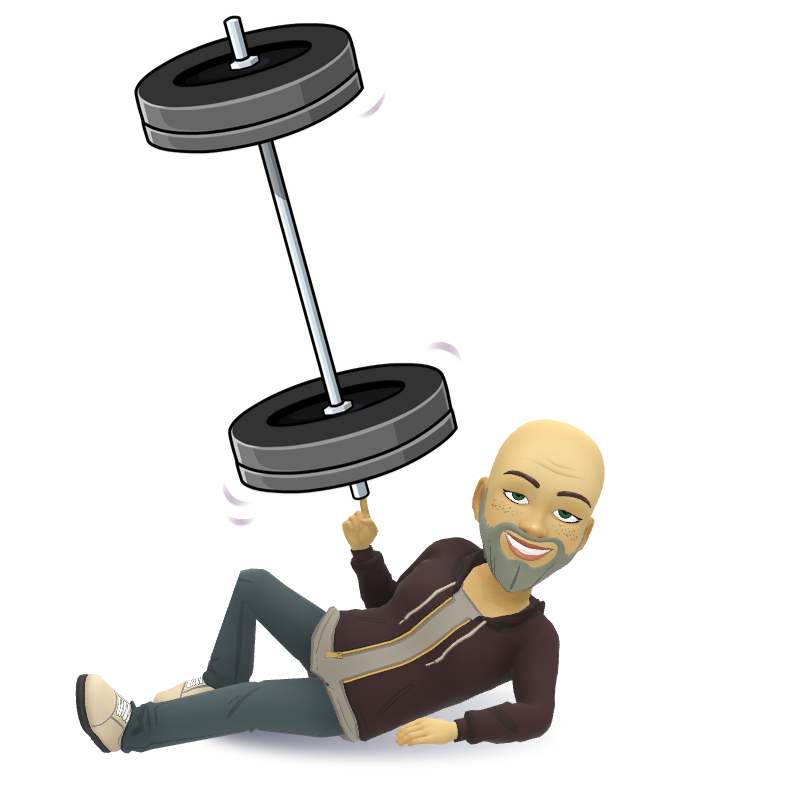
Have you ever walked into a sprawling, state-of-the-art gym for the very first time? You look around, and there it is: a dazzling array of equipment. Rows of treadmills, gleaming weight machines, complex resistance bands, and obscure apparatus you can't even name. You know these tools are designed to make you stronger, healthier, and more energetic. But without a clue where to start, which machine does what, or how to use them safely and effectively, it's not empowering – it's overwhelming . You might try a few things, feel awkward, and then just head home, perhaps never to return. This is exactly how many small business owners feel about Artificial Intelligence (AI) tools today. Just like that gym, the digital world is now packed with incredible AI apparatus. There are AI writing assistants (like the fancy new elliptical for your content), AI scheduling tools (your automated treadmill for social media), AI analytics dashboards (the smart scales that tell you what's really working), and countless others. Each one promises to make your business leaner, faster, and more effective. But without a plan, without guidance, and without someone to show you the ropes, these powerful AI tools can feel like a labyrinth of confusion. You know the potential is there to save time, boost your marketing, and streamline your operations, but how do you even begin? What's the right "workout" for your business goals? Which "machines" should you focus on first? That's where we come in!!! At Social Media Academy, we are your AI Trainers and Marketing Coaches. We don't just point you to the equipment and say "good luck." We understand the unique challenges of small business owners – limited time, stretched resources, and the need for clear, actionable steps. Just like a personal trainer builds a custom workout plan, and perhaps a comprehensive wellness and nutrition strategy, we will: Assess Your Business Needs: Help you identify the specific "muscles" (areas of your business) that need strengthening. Create Your Custom AI "Workout Plan": Guide you through the most relevant and user-friendly AI tools, showing you exactly how to use them for your social media and broader business operations. Provide Hands-On Coaching: Walk you through practical exercises, ensuring you build confidence and get real results. Develop Your AI "Wellness & Strategy Guide": Equip you with a clear roadmap to integrate AI into your daily workflow, helping you build a more efficient, productive, and ultimately, less stressful business life. You wouldn't expect to build your dream physique by randomly hopping on gym equipment. Don't expect to transform your business with AI without a guiding hand. Let us be your AI Personal Trainers. Together, we'll build an AI strategy that gets your business in peak condition, saving you time, boosting your marketing, and helping you reclaim your valuable energy.
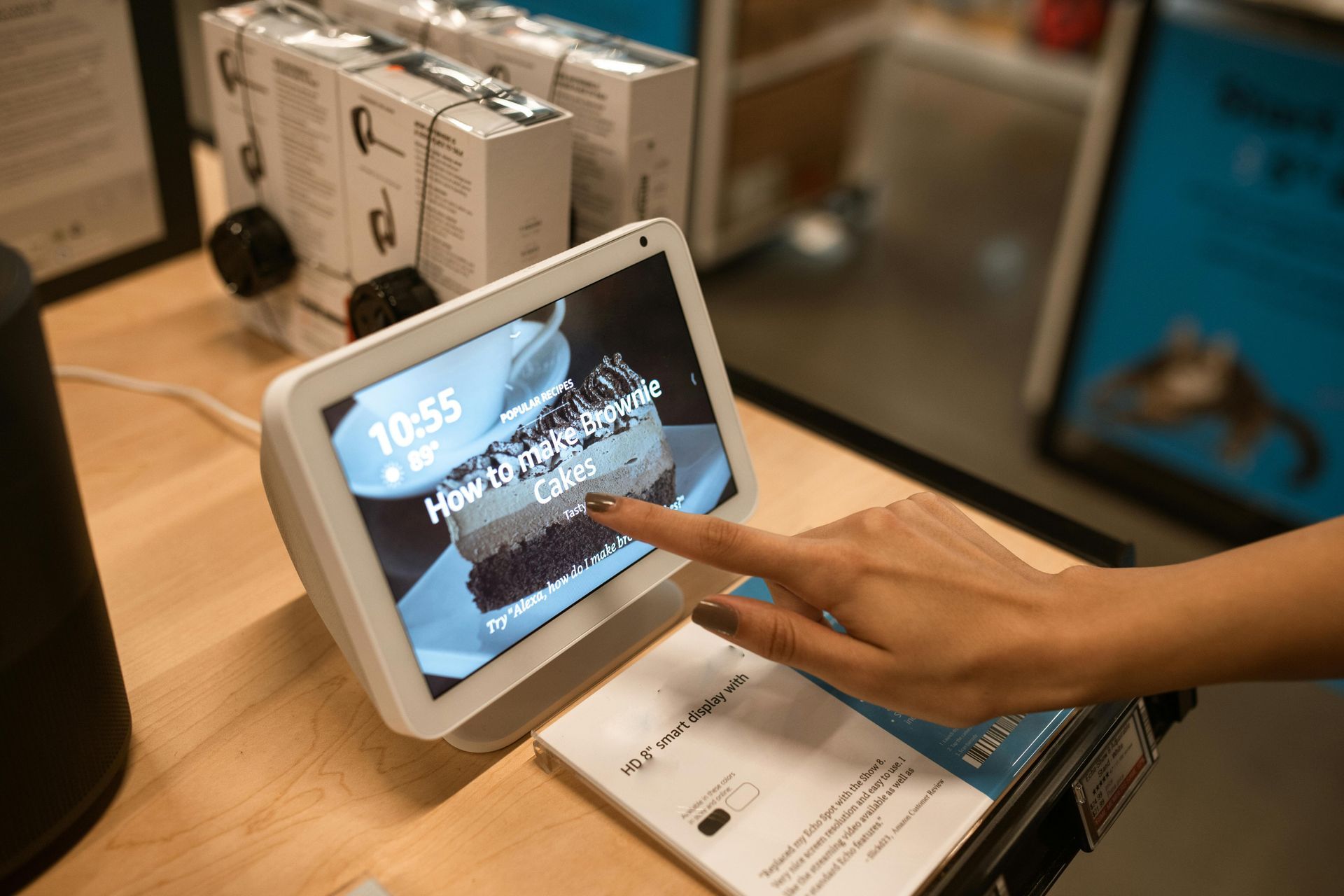
Unleash Your Business's Smart Assistants: The Next Level of AI in Marketing As a small business owner, I know you wear countless hats. Juggling social media, email campaigns, website updates, and everything else can feel like a constant battle against time. You've heard about Artificial Intelligence helping with marketing, but what if it could do more than just write a quick post? What if it could actually think and manage entire sequences of tasks for you? This is where the idea of AI Smart Assistants comes in – it's the next big leap in making your business run smoother and more efficiently than ever before. Beyond Basic Automation: What Are AI Smart Assistants? You're probably familiar with automation that does one thing: "If this happens, then do that." But imagine having a digital team member who can understand a bigger goal and then figure out all the connected steps needed to achieve it, without you having to guide them through each tiny action. That's the power of these AI Smart Assistants. They're like new members of your team who can think, make decisions, and perform a series of linked tasks all on their own, across different parts of your online world. How These Smart Assistants Can Revolutionise Your Business Think about how much time you spend on repetitive, multi-step tasks. Here are just a few ways these clever AI assistants can transform your daily operations: Effortless Client Management: Imagine a new enquiry comes in through your social media. An AI Smart Assistant can automatically take that lead's details, create a new record in your client system, send them a personalised welcome email that sounds just like you, and even set a reminder for you to follow up later if needed. All done without you lifting a finger after the initial setup! Content That Works Harder: You create one great piece of content – say, a blog post. An AI Smart Assistant could then automatically adapt that content into several versions suitable for different social media channels, schedule them, and even suggest relevant images, ensuring your message reaches more people without extra effort. Streamlined Customer Service: For common questions, these assistants can not only provide instant, helpful answers but also take actions. For example, if a customer asks about booking, the assistant could check availability and even guide them through part of the booking process. Massive Time Savings: By handling these multi-step processes, AI Smart Assistants free you up from tedious admin work. This means fewer errors, less stress, and more time for you to focus on what you do best – running and growing your business. Level the Playing Field: For small businesses, this technology means you can operate with the efficiency and automation levels usually only seen in much larger companies, giving you a serious competitive advantage. Bringing Smart Assistants into Your Business The exciting part is that this isn't just a futuristic concept. Clever digital tools exist right now that can help you set up these multi-step, AI-powered workflows. In my coaching, especially in the Master It All course, I focus on guiding you through exactly how to build these smart systems. I'll show you how to connect different parts of your business's online presence, demonstrate real-world examples, and work with you to set up automations that genuinely transform your day-to-day. It’s about building a marketing engine that truly works for you, freeing up your time and driving consistent results. Ready to explore how AI Smart Assistants can transform your business? Let's chat about your unique challenges and how building a more efficient marketing ecosystem can help you achieve your goals. Book a Free Consultation Call with Phil
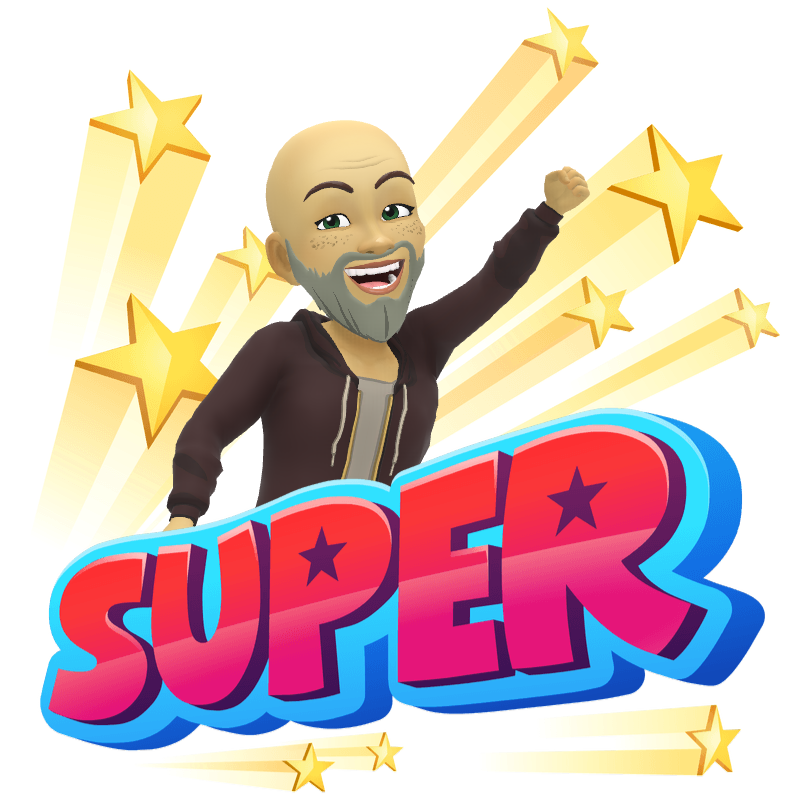
Over the years, working with countless small business owners and startups, I've come to realise that being a truly effective social media coach is about far more than just knowing how to post. It's a blend of deep understanding, strategic thinking, and a genuine commitment to empowering my clients. I often reflect on the key attributes I strive to embody every day to ensure I'm providing the very best guidance. 1. Staying Ahead of the Curve: My Deep Understanding of Social Media Platforms and Trends I pride myself on being relentlessly curious and constantly updated. I'm always diving deep into the latest platform changes, algorithm shifts, and emerging trends to ensure that every strategy I recommend is not just relevant, but cutting-edge and truly effective for my clients. The digital world never stands still, and neither do I. 2. It's All About Your Business: My Strategic and Personalised Approach For me, there's no such thing as a one-size-fits-all solution in social media. I believe a great coach collaborates closely with each client, taking the time to truly understand their unique business, their audience, and their specific challenges. Together, we define clear objectives, develop bespoke strategic plans, select the right platforms, and craft content calendars that genuinely align with their brand goals. My focus is always on building authentic relationships and emotional connections, not just pushing promotions. 3. Unlocking Your Creativity: My Content Expertise I love helping clients discover their own creative voice and produce content that truly resonates. Whether it's guiding them to create actionable tips, engaging how-to guides, compelling videos, or informative infographics, I ensure their content addresses their audience's pain points and fosters trust. It’s about making them stand out in a crowded online world. 4. Clear Guidance, Real Empowerment: My Communication and Coaching Skills My approach is built on clear, jargon-free communication. I break down complex social media concepts into easy-to-understand, actionable steps, ensuring my clients feel empowered and confident, not overwhelmed. I believe in active listening, asking the right questions, and being fully present to build strong trust and rapport, which is essential for effective coaching. 5. Making Sense of the Numbers: My Analytical and Problem-Solving Abilities It's not enough to just post; we need to know what's working. I teach my clients how to interpret their social media analytics, identify what's performing well (and what isn't), and then adapt our strategies based on real data. It's about smart, data-driven improvements that lead to tangible results. 6. Building Real Connections: My Focus on Authentic Engagement Authenticity is at the heart of everything I teach. I guide clients on how to genuinely interact with their audience – responding thoughtfully to comments, messages, and mentions – to foster meaningful connections and cultivate a loyal community around their brand. It's about building relationships that last. 7. Proven Results: My Experience and Portfolio With years of hands-on experience managing social media accounts for diverse clients, I bring a wealth of practical knowledge to every session. My portfolio showcases real results, growth metrics, and successful campaigns, giving clients the confidence that they're learning from a proven track record. 8. Always Evolving: My Commitment to Networking and Continuous Learning The digital landscape never stands still, and neither do I. I'm committed to continuous learning, constantly adapting to new trends, and building relationships with other professionals in the industry. This ensures my clients always receive the most current and effective guidance possible. Ultimately, I see myself as more than just a coach; I'm a strategic mentor and a creative problem-solver. My goal is to provide personalised, value-driven guidance, foster authentic engagement, and continuously adapt to the evolving social media landscape to help my clients truly grow their presence and achieve meaningful results. It's incredibly rewarding to see them succeed.
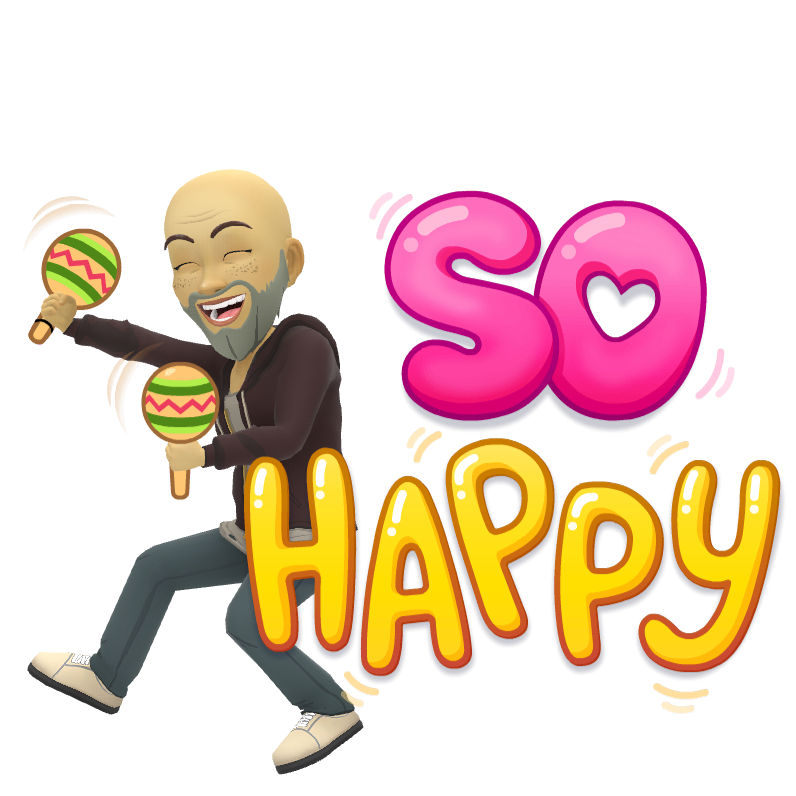
For years, I chased the dream: that one magical app that would do everything. You know the one – CRM, task manager, invoicing, project tracker, all rolled into a single, glorious digital beast. It felt like the answer to all my organisational woes, especially with my ADHD brain. The reality? It ended up having the opposite effect. I'd jump in to add a simple task, and before I could even type it, my eye would catch a notification about an overdue invoice or a deal to chase. My brain would immediately jump ship, and the original task? Gone, vanished into the digital ether. It took me a long time to realise that for a brain that thrives on clear pathways and minimal distractions, the "all-in-one" solution was actually the enemy. My biggest breakthrough came when I embraced the idea of single-function apps . If an app's primary job is to manage tasks, that's all it does. No tempting sidebars, no flashing alerts from other modules. This approach has been a game-changer for my focus and productivity. It's about finding tools that work with my ADHD, not against it, by removing the constant invitation to get sidetracked. This simple philosophy has transformed how I manage my day, my projects, and ultimately, my business. Google's Dynamic Trio: Keep, Tasks & Calendar – When it comes to keeping my day running smoothly, I rely heavily on Google's suite of apps. They're straightforward, widely accessible, and crucially, they stick to their lanes. This "one app, one job" approach is a godsend for my ADHD brain, preventing the digital clutter that leads to distraction. 1. Google Calendar: Your Time Anchor Google Calendar is my digital diary. It's where every appointment, meeting, and time-blocked session lives. Why does it work? It's super simple and visually clear . When I need to add an event, I open Calendar directly, click the time slot, type it in, and add a reminder. Done. No other features to tempt me away. I also use colour-coding for different types of events (work, personal, client calls) for a quick visual overview, and I set up recurring events so I don't have to constantly re-add regular meetings. 2. Google Tasks: Your No-Fuss To-Do List For all my actionable items, Google Tasks is my go-to. It's exactly what it says on the tin: a simple, straightforward list . There are no fancy features to get lost in, which means I can get in, add my task, and get out quickly. I typically open it as a sidebar in my Gmail or Calendar, type the task, and add a due date if needed. For bigger tasks, I break them down into subtasks to make them less daunting. It's quick, efficient, and keeps me focused. 3. Google Keep: Your Digital Scrapbook Google Keep is my versatile space for quick notes, ideas, lists, and saving content. It's incredibly flexible and visually oriented , making it ideal for quickly dumping information without needing to organise it perfectly right away. I use it for jotting down sudden thoughts, creating simple checklists, or – and this is a big one – copying and pasting long articles or content I want to read later. This stops me from getting sidetracked by it right now. I use simple labels (like "To Read" or "Ideas") to easily find notes later, but I don't overcomplicate the system. Gemini: My AI Sidekick and Seamless Integrator For my AI needs, Google Gemini is my chosen agent. While tools like ChatGPT are powerful, Gemini's deep integration with the Google ecosystem is what makes it a game-changer for me, especially with my ADHD. It significantly reduces the friction of moving information between different tools. Gemini isn't just a smart AI that generates text or brainstorms ideas; it's also a fantastic digital assistant that directly interacts with my Google apps. Here's how I use it to keep everything connected: Adding to Calendar: If I'm chatting with Gemini and decide I need to schedule something, I can simply prompt it, "Add 'Client follow-up call at 10 AM tomorrow' to my Google Calendar ." It understands and creates the event directly. Adding to Tasks: Need to remember a new to-do? I just tell Gemini, "Add 'Research new social media trends' to my Google Tasks ." Or even more specific, "Remind me at 3 PM to email Sarah via @Google Tasks ." Saving to Keep: If Gemini generates a brilliant idea or I want to save a summary of a conversation it's helped with, I can instruct it, "Save this response to a new note in Google Keep ." This seamless flow means I can capture information and organise it almost instantly, without losing my train of thought or getting sidetracked by opening multiple apps. It's like having a super-efficient personal assistant who anticipates my next move and keeps everything tidy. Trello: Visualising My Projects (Without the Overwhelm) While my Google apps handle my daily tasks and quick notes, for more structured projects and collaborative work, Trello has proven to be an invaluable tool. It’s a visual project management platform that uses "boards," "lists," and "cards" to organise tasks. What makes it particularly effective for a mind like mine? It's highly visual . My brain loves to see things laid out in a clear, accessible way. This visual structure prevents the information overload that can come with complex projects, allowing me to focus on specific stages without getting lost in the details. Here’s how I use it to keep my projects on track: Separate Boards for Projects: To avoid overwhelming myself, I create a separate Trello board for each major project or client . This keeps everything contained and reduces visual clutter. Simple Lists: Within each board, I stick to very simple, intuitive lists. Typically, these are "To Do," "Doing," and "Done," or specific project stages like "Drafting," "Review," and "Published." This allows me to see progress at a glance. Cards for Tasks: Each individual task within a project becomes a "card." I keep the descriptions on these cards concise and to the point, avoiding the trap of getting bogged down in too much detail at this stage. Colour-coding and Due Dates: I use colour-coding for priority or type of task, and crucially, I set due dates on cards. These visual cues serve as powerful reminders and help me prioritise without needing to dig deep into each task. Trello provides that perfect balance of visual clarity and structured organisation, allowing me to manage larger projects effectively without falling into the "overwhelm" trap. Fireflies.ai & Zoom's AI Companion: My Meeting Memory Boosters Meetings can be a real challenge for many ADHD brains. We want to be present, engaged, and contribute, but also remember every key decision and action point. This often leads to frantic scribbling, missing crucial details, or simply feeling overwhelmed. That's where Fireflies.ai has been an absolute game-changer. Fireflies.ai is an AI tool that joins my online or even in-person meetings. It automatically records, transcribes, and summarises everything that's said. This means I no longer have to worry about taking detailed notes; I can fully focus on the conversation , listen intently, and participate meaningfully. It's truly liberating. Here’s how these tools have transformed my meeting management: Automated Summaries: After every call, Fireflies.ai sends me a concise summary, highlighting key decisions, discussion points, and most importantly, tasks assigned to each participant . This ensures nothing slips through the cracks. Searchable Transcripts: If I need to recall a specific detail from a past meeting, I can easily search the full transcript rather than relying on my often-forgetful memory or trying to decipher hurried notes. Prepared for Next Steps: Before any follow-up meeting, I quickly review the Fireflies.ai summary. This instant refresh ensures I'm always prepared, remembering exactly what was discussed and agreed upon previously. I'm currently trialling Zoom's recently added AI Companion which offers similar functionalities. The goal is to see if I can consolidate my tools and cut down on subscriptions, but the core benefit of automated, intelligent meeting notes remains invaluable. These tools aren't just note-takers; they're memory boosters that significantly reduce post-meeting anxiety and improve my overall productivity. Notion: The "Grown-Up" Experiment (Using it Wisely) So, I'm trying to be a "grown-up" – which, for me, means exploring tools like Notion . It's an incredibly powerful and flexible workspace for notes, tasks, project management, and databases. It promises to do everything, and that's precisely why I'm approaching it with caution! As I've learned, the "all-in-one" solution can quickly become overwhelming for my ADHD brain. My goal with Notion is to integrate it wisely into my existing suite of single-function apps, without falling into the trap of using it for every single thing. It’s a delicate balance, and I'm still in the process of finding the best way to make it work for me, rather than becoming another source of distraction. Here's my current approach to this "grown-up" tool: Single Purpose Focus: Instead of trying to shift all my daily tasks and quick notes into Notion, I'm consciously reserving it for very specific, more formulated processes that genuinely benefit from its powerful database capabilities. Linked, Not Overlapping: The aim isn't to replace my tried-and-tested Google suite or Trello boards. Instead, Notion is meant to complement them. I'm exploring linking information where appropriate, using it for things that benefit from a structured database (like content planning pipelines or detailed client onboarding checklists), while my quick, daily tasks remain firmly in Google Tasks. Controlled Integration: I'm deliberately taking my time to understand its features and how they can enhance, rather than complicate, my existing workflow. It's a careful experiment in leveraging its power without getting lost in its vastness. Notion offers immense potential, but for a brain like mine, the key is discipline and a clear understanding of its role within my overall system. It's a journey towards more sophisticated organisation, but one taken with careful, measured steps.

As a digital marketer or business owner, you're constantly looking for the most effective ways to drive results. When it comes to generating leads or sales, a common question pops up: Should I create dedicated landing pages for my marketing campaigns, or just add new pages to my main website? It's a great question, and while adding pages to your site seems simpler, a dedicated landing page strategy often wins out. What's the Big Deal About Dedicated Landing Pages? Think of your main website as a well-stocked department store. It has everything: product aisles, customer service, an 'about us' section, and directions to the restrooms. It's designed to inform and navigate. A landing page , on the other hand, is like a highly focused pop-up shop. It has one specific product or offer, a clear call to action, and nothing else to distract you from making that purchase. Here's why that focused approach is so powerful for marketing campaigns: 1. Laser-Sharp Conversion Focus This is the number one reason. A good landing page is built with a single goal in mind – whether it's getting someone to sign up for a newsletter, download an ebook, or book a consultation. No Distractions: Unlike your main website, a landing page typically strips away navigation menus, footers, and other links. This means visitors can't get lost or click away from the offer. It's all about guiding them to take that one desired action. Clear Call to Action (CTA): The "Sign Up Now," "Download Here," or "Get Your Free Quote" button is prominent and unambiguous. 2. Highly Targeted Messaging Imagine running a Google Ad for "eco-friendly dog food." If that ad sends users to your generic pet supply homepage, they might have to hunt for what they're looking for. However, if that ad sends them to a dedicated landing page all about your new eco-friendly dog food line, featuring testimonials, benefits, and a clear "Buy Now" button, the experience is seamless and highly relevant. You can tailor content to specific ad campaigns, audience segments, and even individual keywords, creating a far more personal and effective experience. 3. Unbeatable Measurability & OptimiSation How do you know if your marketing efforts are actually working? With dedicated landing pages, it's crystal clear. Precise Analytics: You can easily track how many people visited the page and, more importantly, how many converted. This allows you to pinpoint what's working and what isn't. A/B Testing Power: Dedicated landing pages make it much easier to test different headlines, images, calls to action, and layouts. This iterative process of A/B testing is crucial for continuously improving your conversion rates and getting more bang for your buck. 4. Agility and Speed to Market In the fast-paced world of digital marketing, being able to launch campaigns quickly is a huge advantage. Rapid Deployment: Building a new page on your main website can sometimes involve developers, design cycles, and multiple approvals. Dedicated landing pages can often be spun up in minutes or hours, not days or weeks. Independent Updates: Changes to a landing page don't risk breaking anything on your main website, allowing for quick tweaks and iterations. When Should You Just Add Pages to Your Main Website? While landing pages are kings of conversion, your main website is still vital. You should build pages directly on your main site for: Evergreen Information: "About Us," "Services," "Contact Us," blog posts, and detailed product/service descriptions that aren't tied to a specific, short-term campaign. SEO Value: Pages intended to rank organically in search results for a variety of keywords and contribute to your overall domain authority. Complex Functionality: If you need deep e-commerce integration, user logins, or intricate database interactions. Long-Term Content: Content that will remain relevant for an extended period. The Takeaway: A Smart Strategy for Modern Marketing Creating dedicated landing pages is absolutely a smart move for your clients' marketing campaigns. It empowers you to: Maximise campaign performance by creating focused, high-converting experiences. Be agile and responsive to market opportunities. Optimise continuously based on clear data. It's not about choosing one or the other; it's about understanding the strengths of each approach and using them strategically. Landing pages fuel your campaigns, while your main website provides the comprehensive home base for your brand.

Running your own business is a whirlwind, isn't it? You're juggling everything from serving your customers to balancing the books. And then there's social media… that never-ending to-do list of posts, updates, and trying to figure out what on earth to say. If the thought of another week glued to your phone, trying to keep up with Facebook, Instagram, and all the rest makes you groan, you're definitely not on your own. Many small business owners in places like Southport (and all across the UK, to be honest!) feel exactly the same. It can feel like a massive time sink, and sometimes you wonder if it's even worth the effort. But what if there was a way to make social media less of a chore and more of a helpful tool – without needing a degree in rocket science or spending a fortune on fancy tech? Enter AI: Your New Social Media Mate Now, we know what you might be thinking. "AI? Isn't that all robots and complicated computer stuff?" Well, yes, some of it is. But the good news is that there are now some really clever (but surprisingly simple) AI tools out there that can take a big chunk of the social media burden off your shoulders. Think of AI in this context as your new, super-efficient assistant. It can help you with tasks that used to eat up your precious time, leaving you free to focus on what you do best – running your business and serving your lovely customers right here in Southport (or wherever you are!). How Can AI Actually Help My Social Media? You might be surprised at just how many ways AI can lend a hand: Coming Up with Ideas: Staring at a blank screen wondering what to post? Some AI tools can help you brainstorm ideas based on your business, what's popular, and what your audience might like. No more creative block! Writing Your Posts: Not a natural wordsmith? AI can help you draft social media posts, making sure they sound engaging and get your message across clearly. You can then tweak them to sound just like you. Finding the Best Times to Post: Ever wondered when most of your customers are actually online? AI can analyse your audience and suggest the best times to share your content, meaning more people will actually see it. Scheduling Your Posts: Instead of having to manually post every single day, AI-powered tools can schedule your content in advance. You can sit down once a week, plan your posts, and let the AI take care of the rest. Imagine those extra hours! Keeping an Eye on Things: Some AI can even help you monitor what people are saying about your business online, so you can quickly respond to comments or questions. No Tech Head Required! The best part is that you don't need to be a tech whizz to use these tools. Most of them are designed to be really user-friendly, with clear instructions and simple interfaces. It's often as easy as typing in a few details about your business and letting the AI do its magic. Reclaim Your Time and Focus on What Matters Social media doesn't have to be a constant drain on your time and energy. By embracing some of these clever AI tools, you can: Save hours every week: Think about what you could do with that extra time – maybe focus on a new product, chat with more customers, or even just have a proper tea break! Be more consistent: Regularly posting engaging content helps you stay top-of-mind with your customers. Potentially reach more people: By posting at the right times and with engaging content, you're more likely to get noticed. Reduce stress: Take the pressure off trying to come up with content on the fly. Ready to Dip Your Toe in the AI Water? If you're a small business owner in Southport (or anywhere else in the UK!) who's feeling overwhelmed by social media, now might be the perfect time to explore how AI can help. It's not about robots taking over your business; it's about using smart tools to make your life a little bit easier and your marketing more effective. At Social Media Academy, we're passionate about helping small businesses understand and use these tools without the jargon. Keep an eye out for our upcoming resources and training on how to harness the power of AI for your social media – you might just be surprised at how much time you can save!

It seems like every business is talking about their AI strategy these days. But let's be honest, a lot of it is just fancy talk. They buy a shiny new AI tool, cross their fingers, and hope it magically transforms their social media. The truth is, AI on its own won't fix your marketing. What will make a difference is having a solid system in place, with AI working as a powerful tool within that system. The Problem with "Vibes-Based" AI We're seeing it all the time: businesses investing in AI writing tools, or AI analytics platforms, without any real idea how to use them effectively. There's no proper training for staff, no integration into their existing workflow, and no clear goals. They end up wasting money on software they don't understand, and their social media results stay stubbornly the same. AI Needs a System to Shine Think of AI as a turbocharger for your car. It can give you a massive boost, but it's useless without an engine, wheels, and a driver who knows where they're going. In social media, your engine is your overall marketing plan. This includes things like: Knowing your target audience inside out Having clear goals for your social media activity Creating a consistent flow of valuable content Engaging with your followers regularly Our Social Media Training: AI Integrated That's why our social media training course is different. We don't just throw AI tools at you and wish you luck. We provide a comprehensive framework – a 3-month marketing plan – that puts AI in its proper place. You'll learn: How to build a robust social media strategy from the ground up Which AI tools are genuinely useful for specific tasks How to integrate those tools seamlessly into your daily workflow How to measure your results and refine your approach over time Get Real Results, Not Just Hype We're focused on getting you tangible results: more engagement, a bigger following, and ultimately, more customers. It's about using AI strategically, not just for the sake of it. #MemeingfulMarketing What next?: Want to see how AI can really transform your social media? Book a free consultation to see how AI can change the way you work forever

In today's fast-paced digital world, social media is a crucial tool for businesses of all sizes. But managing it effectively can be time-consuming and overwhelming. What if you could achieve better results with less effort? That's where AI comes in. AI (Artificial Intelligence) is revolutionising how we approach social media marketing, offering powerful tools to automate tasks, analyze data, and create engaging content. At Social Media Academy, we offer specialised AI training to help you harness the power of AI and transform your social media strategy. Whether you prefer in-person workshops or the flexibility of Zoom sessions, our training will equip you with the knowledge and skills to thrive. Our Proven AI Training Process We've developed a simple yet highly effective 3-step process to guide you through the world of AI-powered social media management: 1. Smart Social Check-Up The first step in our AI training is to understand where you are now. We'll conduct a thorough Smart Social Check-Up of your existing social media presence. This involves using cutting-edge AI tools to analyse your accounts, identify what's working well, and pinpoint areas for improvement. We'll uncover hidden gems in your data – successful posts you can replicate, optimal posting times you might be missing – and also highlight missed opportunities, such as untapped audiences or underperforming content. This data-driven approach ensures that our AI training is tailored to your specific needs and goals. 2. Putting AI to Work Next, we'll dive into the practical application of AI tools. This is where the magic happens! Our AI training will show you how to put AI to work for your business in meaningful ways. You'll learn how to: Create better content: Discover AI tools that can help you generate engaging captions, suggest relevant hashtags, and even design stunning visuals, saving you time and boosting your content's impact. Chat with followers automatically: Implement AI-powered chatbots to provide instant responses to customer inquiries, answer frequently asked questions, and build stronger relationships with your audience – all without sounding robotic or impersonal. Build systems that learn: Leverage AI algorithms that analyze your social media data to identify patterns and trends, allowing you to refine your strategy over time and continuously improve your results. We'll focus on practical, actionable strategies that you can implement immediately, regardless of your technical expertise. Our AI training emphasizes ethical and responsible AI use, ensuring you maintain a genuine connection with your audience. 3. Watch Everything Improve The ultimate goal of our AI training is to help you achieve tangible results. By implementing the strategies and AI tools you learn, you'll watch everything improve. You can expect to: See your follower numbers climb: Attract a larger and more engaged audience with AI-optimised content and strategies. Watch engagement rates soar: Increase likes, comments, and shares by delivering content that resonates with your target audience. Spend less time managing social accounts: Automate repetitive tasks and streamline your workflow, freeing up valuable time to focus on other aspects of your business. Our AI training empowers you to work smarter, not harder, and achieve sustainable social media success. Training Options: In-Person or Zoom We understand that businesses have different needs and preferences. That's why we offer our comprehensive AI training in two convenient formats: In-Person Training: We come to you, at your business premises so that all your tools are close by and we can discuss how AI tools can help you to achieve your goals Zoom Training Sessions: Enjoy the flexibility of learning from the comfort of your own office, with live instruction, Q&A sessions, and engaging virtual activities. What to do next?: Ready to transform your social media strategy with the power of AI? Contact us today or book a free consultation to learn more about our AI training programs and how we can help your business thrive.
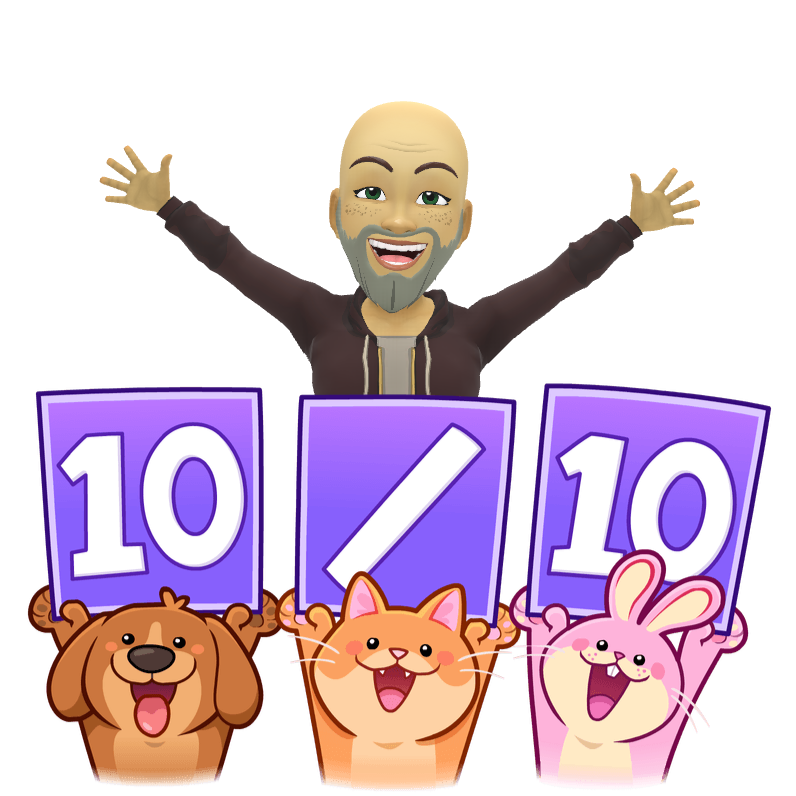
Hi everyone, I'm always looking for ways to help you streamline your business and free up your time. AI (Artificial Intelligence) might sound like something from a science fiction film, but it's actually becoming incredibly useful for small businesses like ours. There are now some amazing tools that can automate tasks, boost your marketing, and generally make life a lot easier. I've been doing some digging, and I want to share 10 of the most promising AI tools I've found. These are all designed to be helpful even if you're not a tech whizz, so don't worry if you're not particularly confident with computers! Tool 1: HeyGen Description: First up is HeyGen. In simple terms, HeyGen lets you create videos using AI avatars – those are like computer-generated people. Instead of having to film yourself or hire actors, you just type in what you want the avatar to say, and HeyGen turns it into a video. This is a really clever way to make training videos, marketing clips, or even just quick updates for your customers, without needing fancy equipment or any filming skills. Key Features: You can choose from a range of different AI avatars. It's really easy to turn text into a video – you just type, and the avatar speaks. Some versions let you create an avatar that looks like you (if that's something you're interested in!). It can speak in different languages, which is brilliant if you have customers overseas. Use Cases: Imagine creating a welcome video for new customers that feels really personal, without you having to be in front of the camera every time. If you need to explain a product or service, HeyGen can help you make a clear and engaging explainer video. It's also great for creating quick social media adverts. Pricing: It's worth having a go with the free trial to see if it's right for you. They have different monthly plans, depending on how many videos you need to make. The cost goes up as you need more videos or extra features. Personal Thoughts : I can see this being a big time-saver for creating those 'how-to' videos that so many of you need for your websites. I'm still getting my head around how realistic the avatars are! It's quite impressive, but it's important to use it in a way that still feels genuine to your brand. For small businesses on a budget, HeyGen could be a really cost-effective way to get professional-looking videos. Tool 2: ElevenLabs Description: Next up is ElevenLabs, which is all about creating realistic voices with AI. You can type in any text, and ElevenLabs will read it aloud in a very natural-sounding voice. What's even more amazing is that it can create an AI version of your own voice, or any other voice you want, which opens up some very interesting possibilities. Key Features: The voices sound incredibly lifelike – much better than the old computer voices we're used to. You can adjust things like the speed and tone of the voice. The voice cloning is the standout feature – it's a bit like making a digital copy of someone's voice. It works in lots of different languages. Use Cases: If you're creating audio versions of your website content for people who prefer to listen, ElevenLabs is ideal. For those of you creating online courses, this could save you hours of recording time. Imagine creating personalised audio messages for your customers using your own AI voice! Pricing: There's a free option to try it out, which is always good. The paid plans charge you based on how much speech you generate each month. Personal Thoughts: I'm really excited about the potential for this to make online learning more accessible. The voice cloning is where it gets really interesting, but we do need to think carefully about the ethics of using this technology responsibly. For small businesses, ElevenLabs could be a quick and affordable way to add professional audio to your marketing or training materials. Tool 3: Gemini Description: Now, I'm sure you've all heard of Gemini! It's Google's latest AI model, and it's designed to be incredibly versatile. Think of it as a super-smart assistant that can help with all sorts of tasks – from writing emails to brainstorming ideas. What sets Gemini apart is its ability to understand and work with different types of information, like text, code, images, and more. This makes it really powerful for a wide range of business needs. Key Features: Gemini can generate text, translate languages, write different kinds of creative content, and answer your questions in an informative way. It's designed to be very responsive and helpful, almost like having a conversation with a knowledgeable colleague. It's constantly being updated and improved, so it's only going to get better over time. Use Cases: Need help drafting a social media post? Gemini can do that for you. Stuck on what to write in an email to a difficult client? Gemini can help you find the right words. Want to brainstorm some new marketing ideas? Gemini can be your sounding board. It can even help you understand complex data or create reports. Pricing: Access to Gemini varies depending on how you want to use it. Some features are integrated into existing Google products, while others might be accessed through APIs or other platforms. It's best to check the latest Google AI announcements for the most up-to-date information on pricing and availability. Personal Thoughts: I'm really excited about the potential of Gemini to help small businesses with their marketing. It could be a game-changer for creating content and engaging with customers. What I love about it is how easy it is to use. You can just ask it a question in plain English, and it understands what you mean. For those of you who struggle with writing, Gemini could be a real lifesaver. Tool 4: AnswerThePublic Description: AnswerThePublic is a brilliant tool for understanding what your customers are really asking about. It basically shows you all the questions people are typing into search engines related to a particular topic. This is incredibly valuable for your marketing, as it helps you create content that actually answers your customers' needs and questions. Key Features: It generates visual 'search clouds' that show you questions, prepositions, comparisons, and related searches. It organises the data in a clear and easy-to-understand way. It helps you identify trends and patterns in what people are searching for. Use Cases: If you're writing blog posts for your website, AnswerThePublic can give you a wealth of ideas for topics to cover. It's great for planning your social media content – you can create posts that directly address your customers' questions. It can also help you optimise your website content to rank higher in search engines. Pricing: There's a free version that gives you a limited number of searches per day, which is a good way to try it out. The paid versions offer more searches and extra features. Personal Thoughts: I use this tool all the time! It's amazing for getting into the minds of your customers and understanding what they're struggling with. It's so much better than just guessing what people want to know – it gives you concrete data. For small businesses on a tight budget, the free version is a great starting point. Tool 5: Google Alerts Description: Google Alerts is a free tool from Google that sends you email notifications whenever new content about a specific topic appears online. It's a really simple but powerful way to stay updated on your industry, your competitors, or even mentions of your own business. Key Features: You can set up alerts for any keyword or phrase. You can choose how often you receive alerts (e.g., daily, weekly, or as it happens). You can specify the sources you want to monitor (e.g., news, blogs, web). Use Cases: Keep track of what people are saying about your brand online. Monitor your competitors' activities and marketing campaigns. Stay informed about the latest trends and news in your industry. Find new content to share with your social media followers. Pricing: Google Alerts is completely free to use. Personal Thoughts: I recommend setting up Google Alerts for your business name, your key products or services, and your main competitors. It's a really easy way to keep your finger on the pulse. It's amazing how much information is out there, and Google Alerts helps you filter out the noise and focus on what's important. For small businesses, this is a fantastic free tool that can provide valuable insights. Tool 6: ScribeHow Description: ScribeHow is a tool that automatically creates step-by-step guides and documentation. It records your screen as you perform a task and instantly turns it into a clear, visual guide with screenshots and instructions. Key Features: Automatic screenshot capture. Step-by-step instructions generated from your actions. Easy editing and customization of guides. Options to share or embed guides. Use Cases: Create training materials for new employees. Document your business processes and procedures. Provide customer support by showing people how to use your products or services. Generate how-to guides for your website or knowledge base. Pricing: ScribeHow typically offers a free trial or a free version with limited features. Paid plans usually offer more advanced features and unlimited guide creation. (You'll need to check their site for the specifics) Personal Thoughts: This tool is a game-changer for creating training documentation! It saves so much time compared to manually writing out instructions and taking screenshots. If you're always answering the same questions from customers or employees, ScribeHow can help you create clear guides that everyone can refer to. I think this would be particularly useful for businesses with remote teams, as it makes it easy to share knowledge and processes. Tool 7: Suno Description: Suno is an AI tool that allows you to create music with vocals. You can generate songs in various styles and genres just by providing text prompts. It simplifies the music creation process, making it accessible to those without musical expertise. Key Features: Text-to-music generation. Ability to create songs with lyrics. Support for various music styles and genres. User-friendly interface. Use Cases: Creating background music for videos or presentations. Generating unique jingles or theme songs for your brand. Producing personalised songs for social media content. Exploring musical ideas without needing instruments or recording equipment. Pricing: Suno may offer a free trial or a free tier with limitations. Paid subscriptions likely provide more song generation credits or advanced features. (It's best to check their website for the most current pricing details.) Personal Thoughts: This is a really fun and creative tool! It could be a great way to add a unique touch to your marketing materials. While it might not replace professional musicians for high-quality recordings, it's excellent for quick and easy music creation. For small businesses looking to create engaging content on a budget, Suno offers an interesting option to explore. Tool 8: NiceJob Description: NiceJob is a reputation management platform that helps businesses collect and showcase positive customer reviews. It automates the process of gathering reviews from various platforms and helps you use those reviews in your marketing to attract more customers. Key Features: Automated review collection from multiple sites. Tools to share reviews on social media and your website. Features to monitor your online reputation and track your progress. Use Cases: Building trust and credibility with potential customers. Improving your online reputation and search engine rankings. Saving time on manually collecting and sharing reviews. Pricing: Look for different plans based on the number of locations or the features you need. They often have trials or demos available. Personal Thoughts: For local businesses, online reviews are absolutely essential. NiceJob seems like a great way to make the most of those positive customer experiences. I like that it helps you not only collect reviews but also use them actively in your marketing.If you're struggling to get enough reviews or want to improve your online reputation, NiceJob is worth checking out. Tool 9: Synthesia Description: Synthesia is an AI video generation platform that allows you to create videos with AI avatars. Similar to HeyGen, it simplifies video creation by enabling you to generate videos from text, using digital avatars as presenters. Key Features: A variety of AI avatars to choose from. Text-to-video conversion in multiple languages. Custom avatar creation (possibly, confirm on the website). Easy video editing and sharing. Use Cases: Creating training videos and tutorials. Developing marketing and sales videos. Personalizing video messages for customers. Pricing: Look for free trials or subscription plans with varying video lengths or features. Personal Thoughts: AI video generation is becoming more and more impressive. Synthesia could be a cost-effective way to produce professional-looking videos without expensive equipment. It's important to consider when using AI avatars is appropriate for your brand. Sometimes a real person is still more effective. For businesses that need to create a lot of video content regularly, Synthesia could save significant time and money. Tool 10: BigVu Description: BigVu is a teleprompter and video creation app that helps you record professional-quality videos with your smartphone. It combines a teleprompter to help you read your script with features to edit, add captions, and share your videos. Key Features: Teleprompter functionality that scrolls your script. Automatic captions to make your videos more accessible. Video editing tools to trim, add music, and brand your videos. Easy sharing to social media platforms. Use Cases: Creating engaging videos for social media marketing. Recording presentations and training videos. Producing video updates for your team or clients. Pricing: They often have a free version with basic features and paid plans for more advanced functionality. Personal Thoughts: I've always struggled with looking natural on camera, so a teleprompter app like BigVu is very appealing! The automatic captions are a great feature for making videos more accessible to everyone. For small businesses that want to create professional-looking videos on a budget, BigVu is a handy tool. CONCLUSION So, there you have it – my top 10 AI tools to help you supercharge your business! We've covered a lot of ground, from automating tasks and creating engaging content to managing your reputation and streamlining communication. Remember, AI is a powerful tool, but it's not about replacing you. It's about empowering you to work smarter, not harder. By exploring these tools and finding the right fit for your needs, you can free up time, improve your efficiency, and ultimately achieve your business goals faster. I encourage you to take the next step and try out a few of these tools. Most offer free trials or free versions, so you can experiment without any risk. I'm really keen to hear what you think! Which of these tools are you most excited about? Have you used any other AI tools that have been a game-changer for your business? Please share your thoughts with me – let's learn from each other! *Disclaimer: Please note that some of the links on this page are affiliate links, which means we may earn a small commission at no additional cost to you if you make a purchase through them. **Double-check the details and pricing on each website, as this information can change.

Right, let's have a proper honest chat, shall we? Looking back at my romantic history, it's fair to say it reads a bit like a comedy of errors – albeit one that probably wasn't all that funny for the leading ladies involved. Two marriages, three other long-term girlfriends… a fair few notches on the relationship bedpost, you might say!! But if I'm truly honest with myself (and with you lot), the trail of bewildered and likely exasperated exes behind me might just have a common denominator: my good old friend, ADHD. It wasn't until later in life that the penny finally dropped, that the whirlwind of my brain had a name. But looking back through the lens of this newfound understanding, so many of my less-than-stellar relationship habits suddenly click into place. Take the forgetfulness, for instance. It wasn't a conscious decision to blank on birthdays or anniversaries; my brain simply didn't flag them as the red-letter days they are. The mental clutter, the lack of organisation that spills out into every aspect of life? That probably didn't scream "stable and reliable partner" either. And my timekeeping? Let's just say "fashionably late" was less of a choice and more of a default setting, a constant source of frustration, I'm sure. Then there's the memory. Or rather, the sieve I seem to have where memories should be. Important dates vanished into the ether, details of conversations evaporated like morning mist. I can only imagine how that felt to someone who expected me to remember the little things, the things that signify care and attention. It wasn't all bad, mind you. I like to think I brought a fair bit to the table. I'm generally easy-going, love a good laugh (and making others laugh), and I genuinely care deeply about the people in my life. When the stars aligned and my brain cooperated, I could even pull off a romantic gesture or two! I'm also a giving person, often putting others' needs before my own – perhaps even to a fault, in my eagerness to please and avoid confrontation. Ah, the people-pleasing. That's another delightful ADHD trait that probably did me no favours in the long run. The desire to avoid conflict, to keep the peace at all costs, often meant I wouldn't address underlying issues, letting them fester until they inevitably blew up. And then there's my relentless obsession with ambition and work. That hyperfocus, that all-consuming drive to succeed professionally? It often came at the expense of nurturing my relationships, leaving partners feeling like they were playing second fiddle to my career. But let's be fair, it wasn't all me, was it? Relationships are a two-way street, and no one is perfect. But as I navigate this stage of life, the allure of solo living has become increasingly strong. The thought of constantly having to navigate the complexities of a long-term relationship, the potential for misunderstandings fueled by my ADHD quirks, the need for constant communication and compromise… well, the quiet comfort of my own company often seems a far more appealing prospect these days. Perhaps it's a form of self-preservation. Perhaps it's simply an acceptance of who I am and what I find easier. Either way, looking back, it's hard not to wonder if my wonderfully wired brain, with all its quirks and foibles, played a significant role in the romantic rollercoaster I've experienced. Maybe understanding this now is the first step towards a different kind of relationship – the one I have with myself, in the peaceful solitude of my own company. And honestly? Right now, that feels pretty good.

AI is not just a collection of individual tools; it's a transformative force that can be integrated across your entire marketing workflow. From understanding customer behaviour and personalising marketing messages to automating repetitive tasks and analysing campaign performance, AI offers a holistic approach to enhancing your marketing efforts. Explore the various ways AI can work together to create a more efficient, effective, and data-driven marketing strategy, ultimately freeing you up to focus on building relationships and growing your business. Consider how AI can streamline your customer communication . By analysing data on how your audience interacts with your content, AI tools can help you tailor your messaging for maximum impact, ensuring you're delivering the right information to the right people at the right time. Furthermore, think about the time you can save by automating repetitive tasks such as scheduling social media posts or segmenting your email list. This frees up your valuable time to focus on the bigger picture – building relationships with your customers and developing innovative strategies for business growth. Embracing AI across your workflow isn't just about keeping up with the times; it's about gaining a genuine competitive advantage and working smarter, not just harder.

Valuable insights often get lost in the flurry of meetings and conversations. AI-powered meeting assistants can now transcribe and summarise discussions, making it easier to capture key information, identify action points, and analyse important points. This technology can be particularly useful for reviewing client calls, brainstorming sessions, and team meetings, ensuring that no valuable information slips through the cracks. Learn how to leverage AI to improve meeting productivity, extract key insights, and make data-driven decisions for your marketing strategies. Think about how this could transform your client interactions . By using AI to transcribe and summarise calls, you can easily revisit key points, ensuring you fully understand your clients' needs and preferences. This allows for more personalised and effective follow-up, strengthening client relationships. Furthermore, consider the benefits for internal team meetings and brainstorming sessions . AI can help you keep track of all the ideas and decisions made, ensuring everyone is on the same page and that valuable insights aren't forgotten. This leads to more efficient teamwork and better-informed strategic planning for your marketing efforts.

In the visually-driven world of online marketing, compelling graphics are essential for capturing attention and reinforcing your brand. While professional design skills are valuable, AI-powered design tools are making it easier than ever for business owners to create stunning visuals for social media, website banners, marketing materials, and more. Discover how AI can help you with layout suggestions, colour palettes, image enhancements, and even generating unique design elements, empowering you to create a visually appealing and consistent brand presence. Consider the impact of eye-catching social media graphics that you can create quickly and easily with AI assistance. Whether it's promotional posts, event announcements, or engaging visual content to break up text, AI can help you produce professional-looking designs without needing extensive design knowledge or hiring a graphic designer for every small task. Furthermore, think about creating attractive website banners and marketing materials that align perfectly with your brand's aesthetic. AI tools can help you maintain visual consistency across all your online and offline presence, strengthening your brand recognition and making a positive impression on your audience.

Staring at a blank screen, struggling to find the right words? AI writing assistants are becoming invaluable tools for marketers, helping to overcome writer's block and streamline the content creation process. From brainstorming ideas and drafting social media posts to crafting compelling website copy and even outlining blog articles, AI can be your always-available writing partner. Learn how to effectively prompt and guide these AI tools to generate high-quality content that resonates with your target audience and saves you valuable time and effort. Think about how this can revolutionise your social media presence . Instead of spending ages crafting the perfect tweet or Facebook post, you can use AI to generate several options quickly, allowing you to choose the one that best fits your tone and message. Furthermore, consider the time saved when creating website content or blog posts . AI can help you get the initial draft down, freeing you up to focus on refining and adding your expert touch. This allows for a more consistent and efficient content output across all your online platforms, helping you to connect with your audience more effectively.

Video continues to dominate the online landscape, but the thought of being on camera can be daunting for many business owners. Now, AI-powered platforms offer a revolutionary solution: the ability to create realistic and engaging videos using AI avatars. You can bring your messages to life, deliver presentations, explain your services, and connect with your audience visually, all without ever stepping in front of a camera. Discover how to craft compelling video scripts and use AI avatars to build your brand presence and engage your audience in a dynamic new way. Consider the possibilities for creating engaging social media videos that capture attention as users are scrolling through their feeds. AI avatars can deliver your key messages, showcase your expertise, or even present customer testimonials in a visually appealing format. Furthermore, think about developing comprehensive online training modules or informative website explainers using your digital persona. This allows you to deliver consistent and professional video content without the need for repeated filming. Learn how to harness these AI tools to create impactful video content that resonates with your audience and elevates your brand's online presence.

Imagine being able to share your expertise and connect with your audience through the engaging medium of audio, without the time constraints and potential discomfort of recording yourself. Artificial intelligence now offers incredible tools that can transform text into natural-sounding voiceovers. This opens up exciting possibilities for creating audio content for podcasts, social media audio clips, website audio guides, and even personalised voice messages. Think about the potential for launching your own podcast , sharing valuable insights and building a loyal following through consistent audio episodes. AI voice technology can streamline the production process, allowing you to focus on creating compelling content without getting bogged down in recording and editing complexities. Similarly, consider the power of creating training resources using AI voice. You can easily develop audio lessons, walkthroughs, and explanations to supplement your coaching programmes or offer standalone learning materials, providing your clients with flexible and accessible ways to consume information. Learn how to leverage AI voice technology to expand your reach, cater to different learning styles, and add a unique and valuable dimension to your brand communication and educational offerings.

Hi everyone, and welcome to the Facebook module! Facebook is still a powerhouse for connecting with people in your local area. In this lesson, we're going to walk you through setting up your Facebook Business Page properly – this is different from your personal profile and it's essential for your business." "Think of your Facebook Business Page as your shop window online. It's where potential customers can find out about you, see what you offer, and get in touch." "First things first, you'll need a personal Facebook account to create a Business Page, but don't worry, your personal information won't be publicly linked to your business page unless you choose to." "To create a page, go to facebook.com/pages/create. You'll be asked for a 'Page Name' – this should be the name of your business. Then you'll need to choose a 'Category' – pick the one that best describes what you do (e.g., 'Local Business', 'Restaurant', 'Hair Salon')." "You'll also be prompted to add a 'Profile Picture' and a 'Cover Photo'. Your profile picture is usually your logo. Your cover photo is the big image at the top – this could be a photo of your shop, your team, or a happy customer. Make sure these look professional and are the right size (Facebook will give you recommendations)." "Finally, fill in all the other details like your website address, phone number, opening hours, and address. The more information you provide, the easier it is for people to find and contact you." "Remember, keep your language friendly and approachable – like you're talking to someone face-to-face." Homework Task: "Your homework for this lesson is to either create your Facebook Business Page if you haven't already, or to go through your existing page and make sure all the information is complete and up-to-date. Pay particular attention to your 'About' section, profile picture, and cover photo." Great job! Getting your Facebook Business Page set up correctly is the first crucial step. In the next lesson, we'll look at how to create your first engaging posts. See you there!

Ah, finances. The very word can evoke a range of emotions, from mild confusion to outright panic, especially for those of us whose brains tend to operate on a more… creative wavelength. For me, the world of balance sheets, VAT returns, and forecasting often feels like trying to decipher an ancient alien language. And let's not even get started on the shiny things. The magnetic pull of a new gadget, a "must-have" tool, is often irresistible. Logic and existing possessions be damned! The justification for why this new acquisition is absolutely essential is usually swift and convincing, even if I already own something remarkably similar – or, in some truly spectacular cases, the exact same thing that has simply vanished from my awareness. Take the saga of the man bag. A couple of years ago, the thought of a new laptop bag took up significant real estate in my brain. Sleep was a distant memory as I eagerly awaited its arrival from the Amazonian depths, completely disregarding the small mountain range of perfectly functional bags already residing in my wardrobe. The grand unveiling was… anticlimactic. It was a good-looking bag, no doubt, but a crucial two inches too small for my laptop. Now, a rational person might have simply returned it and ordered the correct size. Not me. In a feat of mental gymnastics, I convinced myself that what I really needed was a smaller laptop – lighter on the back, you see! A swift trip to Currys ensued, and a new, smaller laptop was acquired to fit the undersized bag. Fast forward two years to this very week. Browsing a gadget shop with my daughter, a beautiful laptop catches my eye. The familiar "I must have it" siren song begins to play in my head. My daughter, bless her observant soul, gently reminds me, "Dad, aren't you sure you have one of those at home?" And there it was. The very same small laptop I'd bought to fit the ill-fated man bag, used for a week, and then completely forgotten about until this very moment! The financial logic? Non-existent. The allure of the shiny new thing? Utterly compelling. Then there's the treacherous landscape of subscriptions. As I’ve confessed before, my enthusiasm for new software solutions often outweighs my follow-through. The siren call of a free thirty-day trial is almost impossible to resist. "I can always cancel," I tell myself, knowing full well that the likelihood of "future Phil" remembering to do so is slim to none. The result? Monthly direct debits silently draining my bank account for software I’ve long forgotten I even signed up for, let alone used. The fear of actually checking my bank statements only compounds the problem, allowing these phantom subscriptions to continue their stealthy financial drain. Running two limited companies, both VAT registered, only amplified my financial anxieties. The deadlines, the paperwork, the constant need for meticulous record-keeping – it was a recipe for overwhelm. After years of last-minute tax returns and a general feeling of being perpetually behind the financial curve, I finally realised I needed help. Now, you might reasonably ask, "Why not just hire a bookkeeper, Phil?" And that was a logical consideration. However, after years of feeling like I was constantly scrambling to scale the business while simultaneously battling financial admin, I recognised the need for someone more… well, "grown-up" than me to take the reins. Someone whose primary focus would be keeping the finances in order. Bringing Rob on board as a business partner was one of the best decisions I've ever made. Having known him for years, trust wasn't an issue. Suddenly, tax returns were filed on time, bills were paid promptly, invoices went out like clockwork (and were actually chased if they weren't paid – a task my inner people-pleaser found excruciating!). Crucially, any new software subscriptions now had to pass the "Rob Test." His sensible approach, allowing a few days of consideration before committing, usually gave my impulsive brain enough time to move on to the next shiny object, saving us a considerable amount of money in the process. So, if you're an entrepreneur, especially one who recognises some of these financial foibles, take the sensible route. Either outsource the financial aspects that consistently wreck your head, or, if you can, find your own "Rob" – someone grounded and financially savvy to keep you on the straight and narrow. Trust me, the peace of mind (and the savings!) will be more valuable than any fleeting gadget.

So, seventeen years immersed in the ever-evolving world of marketing. And the grand total of formal training or qualifications I possess? Zilch. Nada. Not a sausage. It's all been a glorious, self-taught adventure, fueled by curiosity, a healthy dose of trial and error, and, I’m increasingly convinced, the wonderfully wired workings of my ADHD brain. My first proper plunge into the choppy waters of self-employment came with GOSH, my foray into the world of women’s and children’s footwear. This was a pre-internet, pre-social media landscape. We’re talking proper old-school marketing: newspaper ads, painstakingly designed (and probably slightly wonky) flyers, and the sheer graft of getting the word out on the physical streets. Looking back, I realise this forced me to tap into something that now feels intrinsically linked to my ADHD: the ability to think completely outside the box. It wasn’t a conscious strategy; it was more a case of my brain naturally veering off the well-trodden path and stumbling upon unexpected solutions. Turns out, that’s one heck of a superpower. One of my early “ahead of the curve” moments, as I see it now, was my slightly obsessive approach to customer data. Every single person who made a purchase was politely (and probably rather enthusiastically) asked for their name, address, and phone number in exchange for the chance to win a voucher. The response rate was phenomenal – I reckon over 90% happily obliged. This treasure trove of information then allowed me to send out quarterly postcards, handwritten addresses and all, adorned with stamps and offering enticing discounts. Hours were spent hunched over the kitchen table, licking stamps and feeling like a Victorian postal worker. But you know what? It bloody well worked. People felt valued, remembered, and they kept coming back. Then there were the more… direct marketing strategies. I vividly recall one occasion when I decided the best way to drum up business was to literally stand in the middle of town handing out leaflets. My focus, as is often the case with ADHD, was singular and intense. I was in the zone, a human flyer-dispensing machine! So much so that one of my poor staff members had to physically run to find me, breathlessly informing me that the shop was now overflowing with eager shoppers, all thanks to my impromptu street performance. And who could forget the time I donned a full Santa Claus costume on a sweltering summer’s day, brandishing a hand-painted sign proclaiming a “One Day Sale”? The sheer absurdity of it stopped people in their tracks, and yes, it brought customers flooding in. My brain just seems to latch onto the unexpected, the slightly bizarre, the things that cut through the noise. Another “genius” (in my own slightly biased opinion) marketing tactic involved getting a hundred laminated signs made and strategically placing them on lampposts and railings all over town. They were bright, bold, and undeniably eye-catching. And they worked wonders… until the council slapped me with a hefty £500 fine for illegal advertising! Thankfully, the increased business more than covered the cost, a testament to the effectiveness of thinking… well, differently. Looking back, these weren’t calculated marketing strategies born from textbooks or business school seminars. They were the impulsive, energetic, and sometimes slightly chaotic actions of an entrepreneur whose brain just operates on a different frequency. What might seem like a lack of focus to some is, in reality, a constant stream of ideas, a relentless pursuit of what might work, and a fearless willingness to try the unconventional. This inherent “think different” capability, I’m increasingly convinced, is a significant advantage of having ADHD in the business world. Over the past seventeen years, as I’ve transitioned into helping other business owners navigate the digital landscape, I’ve found that my brain’s unique wiring allows me to see opportunities and solutions that others might miss. Give me a brief overview of any business, and within a remarkably short space of time, my mind will be buzzing with a multitude of ways to get their message in front of potential customers without needing a bottomless pit of cash. It’s not always smooth sailing, of course. The very traits that fuel this creative thinking can also present challenges – the distractibility, the impulsivity, the occasional struggle with organisation. But understanding these aspects of the ADHD mind, both the strengths and the challenges, is crucial for anyone navigating the entrepreneurial world with a neurodivergent brain. It’s about harnessing the superpowers while putting systems in place to manage the kryptonite. And trust me, there’s a whole lot of superpower to unpack.
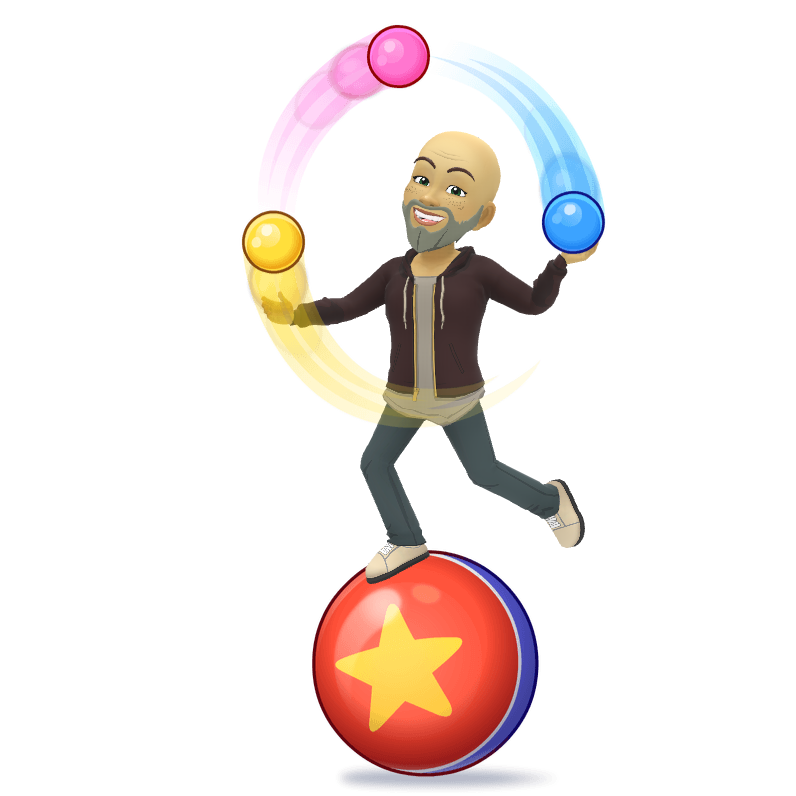
Right, let's talk about the nitty-gritty. Now, I'm no guru on this ADHD lark – I'm still very much on my own learning curve, piecing together the jigsaw puzzle of my life through this new lens. But after over half a century of unknowingly navigating this neurodivergent landscape, I reckon I've picked up a few things. And if sharing some of my own peculiar traits helps even one other person out there who's been feeling similarly… well, then this chapter’s done its job. First up, the sheer volume of stuff happening in my brain at any given moment. It's like trying to attend seventeen different events simultaneously, all within the confines of my skull. I often liken it to a full-blown circus. Picture this: trapeze artists swinging wildly between thoughts, a parade of elephants marching through half-formed ideas, clowns juggling to-do lists that keep multiplying, and a ringmaster (that’s supposed to be me) desperately trying to get everyone to focus on the main act – whatever that main act is supposed to be at that particular moment! It’s exhilarating and utterly exhausting all at once. And then there are the glorious, meandering adventures of my attention span. Take the simple task of unloading the washing machine. In a neurotypical world, this is a straightforward A-to-B mission. In Phil’s world, it’s an epic quest with multiple enticing side quests. On my way to the laundry room, I might suddenly decide that what the kitchen really needs is a culinary masterpiece. So, I’ll start gathering ingredients, only to notice a rogue sock on the floor, which then triggers a mini-tidying spree. Of course, the tidying is never completed. A glimpse out the window reveals the overgrown state of the lawn, and suddenly I’m convinced that urgent horticultural intervention is required. Before I know it, I’m in my car, halfway to the drive-through coffee shop, completely forgetting the damp laundry languishing in the machine, the half-chopped onions on the counter, and the jungle that was once my lawn. The grand finale? Returning home to utter chaos, feeling inexplicably drained, and battling the overwhelming sense that I’ve achieved absolutely nothing. The irony, of course, is that I’ve probably initiated half a dozen tasks, just not finished any of them. Which neatly brings me to the ever-present companion of the ADHD entrepreneur: guilt. A heavy, often unwarranted, weight that seems to settle in my chest. Guilt for not achieving enough (even when I’ve been buzzing around like a caffeinated bee all day). Guilt for not spending enough quality time with family and friends, a feeling often exacerbated by the next delightful ADHD trait… Making plans. Oh, the tangled web of good intentions and subsequent guilt. As a natural people-pleaser, my initial response to any invitation is an enthusiastic “Yes!” My brain, in that moment of social connection, genuinely wants to be there. But then, almost immediately, the internal debate begins. Will I really feel like it then? What other urgent (and often self-imposed) tasks will crop up? The result? A frantic mental scramble to come up with a plausible excuse, followed by a fresh wave of guilt for letting people down and further reinforcing the feeling of being a flaky friend. It’s a truly draining cycle. Ah, the siren call of shiny new things! The fixation on buying. It can strike at any moment, triggered by the most innocuous thought. Suddenly, I need that widget, that gadget, that brightly coloured… something. My brain launches into a full-scale justification campaign, meticulously outlining all the logical (and often wildly illogical) reasons why this purchase is absolutely essential for my survival/business success/general well-being. I’ll then embark on a mission to acquire said item, often getting lost in a rabbit hole of online reviews and comparisons. This can lead to one of two outcomes: either I become so overwhelmed by the sheer volume of choice that I abandon the purchase altogether, experiencing a bizarre sense of relief at having “saved” all that money. Or, I’ll finally make the purchase, experience a fleeting moment of intense excitement during the unboxing, only for the novelty to wear off almost instantly. The prized possession will then be relegated to a dusty corner, only to be rediscovered a year later, sparking the exact same cycle of intense interest followed by rapid disinterest. It’s like Groundhog Day, but with impulse buys. And then there’s the eternal struggle with decluttering. The noble intention to create a serene and organised environment often starts with a burst of hyperfocus. I’ll enthusiastically gather items to be thrown away or donated, creating impressive piles of potential freedom. But then, the “what if?” gremlins start whispering in my ear. “What if you need that chipped mug for a future craft project?” “That slightly stained t-shirt might be perfect for painting!” One by one, items are rescued from the discard pile, deemed too valuable (in some abstract, future scenario) to part with. The end result? The decluttering mission ends with everything being put back exactly where it was, possibly even more jumbled than before. Finally, the pendulum swing of tidiness. There seems to be no middle ground in my world. It’s either a state of hyper-focused, almost obsessive tidying, where every surface gleams and every item is in its designated place (a state that rarely lasts long), or a descent into glorious, chaotic disarray. The washing up can pile up for days, creating a precarious tower of dirty dishes, while other areas of the house might resemble a meticulously organised stationery shop. It’s a constant battle between these two extremes. These are just a few glimpses into the wonderfully weird and often challenging world of my ADHD brain. It’s not a deficit; it’s a different way of processing the world, with its own unique set of quirks, strengths, and, yes, occasional frustrations. But understanding these traits is the first step towards navigating them more effectively, especially in the demanding world of small business. And trust me, there’s plenty more to unpack as we go along.

If there's one thing that can keep me awake at night, it's the thought that someone, somewhere, might not think I'm… well, a great lad. It sounds a bit ridiculous when I write it down, but the desire for universal approval is a powerful, often crippling, force in my life. I desperately want everyone to see Phil as the funny, caring, helpful bloke next door. The idea of someone disliking me, even a casual acquaintance, can genuinely be quite devastating. This deep-seated need to be liked often manifests as a chronic case of people-pleasing. I find myself agreeing with much of what people say, even if my internal compass is pointing in a slightly different direction. It's the path of least resistance, the quickest way to (hopefully) secure that nod of approval, that smile that confirms, "Yes, Phil, you're alright." It's a constant, often subconscious, performance aimed at ensuring I don't ruffle any feathers or, heaven forbid, elicit a negative reaction. Interestingly, there's a flip side to this coin, albeit a less frequent one. If something truly ignites my passion, if it aligns with one of my (sometimes fleetingly intense) interests, then a stubborn streak can emerge. I might find myself putting forward arguments, engaging in discussions, even disagreeing with someone. But even in these moments of conviction, the underlying fear of disapproval is still there. I’ll carefully frame my points, ensuring they don't come across as aggressive or confrontational, always mindful of that dreaded possibility – that the other person might not like me anymore. The aftermath of these (relatively rare) moments of disagreement can be surprisingly torturous. I can lie awake in bed, replaying the conversation endlessly, convinced I've somehow offended or upset the other person. The guilt gnaws at me. Should I have said it differently? Did I come across as rude? The fear of confrontation, often a significant hurdle for people-pleasers, then prevents me from broaching the subject directly. I’ll stew in my anxiety, concocting elaborate scenarios of their potential displeasure, while the other person, who may have simply enjoyed a healthy debate, probably hasn't given it a second thought. For them, a difference of opinion is just a normal part of life. For me, it can feel like a social catastrophe. It's utterly draining, this constant internal monitoring of how I'm perceived. This people-pleasing tendency has undoubtedly shaped many of my decisions, both personally and professionally. In the early days of my businesses, it sometimes led to saying "yes" to opportunities that weren't quite right, simply because I didn't want to disappoint someone. It could also manifest in an over-eagerness to please customers, sometimes at the expense of my own time and resources. Understanding this aspect of my personality, and how it might be intertwined with my ADHD (the heightened sensitivity to social cues, the desire for external validation), is another piece of the puzzle. It's a reminder that while wanting to be liked is a natural human desire, the intensity of this need can sometimes be a hindrance. Learning to set boundaries, to express my own opinions without the crippling fear of disapproval, and to recognise that not everyone will like me (and that's okay!) is an ongoing process. It's about finding a balance between being a genuinely good person and protecting my own mental well-being from the relentless pursuit of universal approval. It's a tough one, this, but acknowledging it is the first step towards a slightly less anxiety-ridden existence.
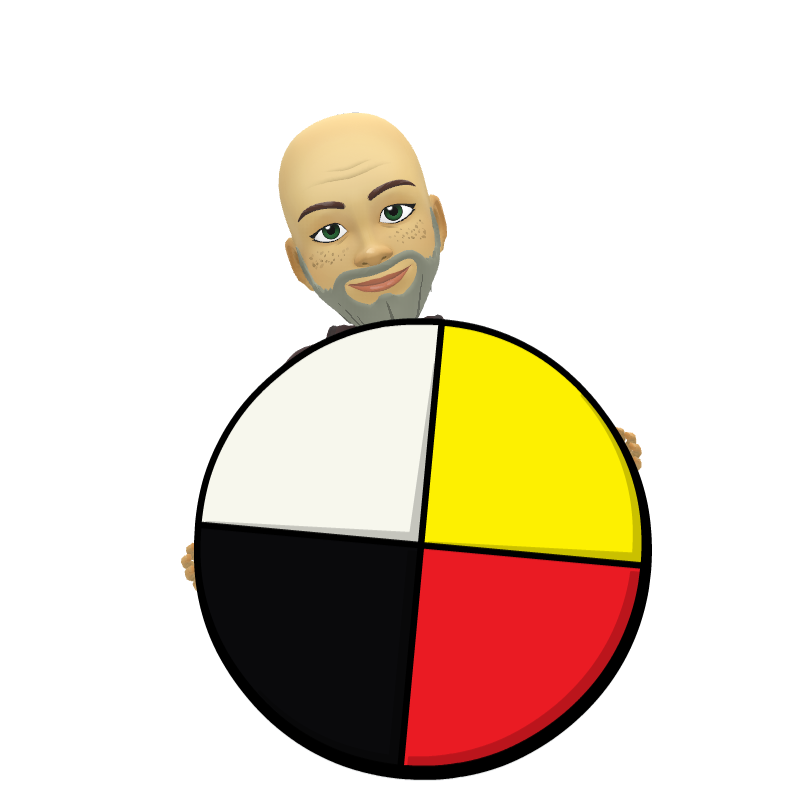
My early childhood was marked by a significant shift, one that felt rather unusual in the UK of the 1970s: my parents divorced when I was around four years old. Looking back, there was perhaps a subtle stigma attached to being from a "broken home," as it was often termed back then. But if there was any negativity, my mum shielded my sister Tanya (three years my senior and my lifelong confidante) and me from it with unwavering strength. Mum was, quite simply, a force of nature. As a single parent, she worked tirelessly, relentlessly even, to ensure Tanya and I never felt like we were missing out. She was determined to maintain a lifestyle that kept us on par with our friends, a testament to her fierce love and dedication. We saw Dad every weekend, which was a constant and comforting presence, but home was undeniably where Mum was, even though both were our rock in different ways. One of the most remarkable aspects of our family dynamic, even to this day, is the almost complete absence of arguments. The four of us – Mum, Dad, Tanya, and me – have navigated life's ups and downs without ever descending into full-blown slanging matches. Now, as I reflect on the previous chapter about my people-pleasing tendencies, I can see how this might have been ingrained from an early age. I'm sure we've all irritated each other at various points over the years, but a combination of politeness, mutual respect, or perhaps an unspoken desire to maintain harmony has always prevented things from escalating. It's a testament to the way we were raised, this quiet, almost serene coexistence. Growing up with a single parent meant that the luxuries enjoyed by some of our peers – the big, extravagant presents, the exotic holidays – were not a regular feature of our lives. However, and this is a crucial point, we never felt deprived. Mum's hard work ensured we were always provided for, and perhaps as a result, Tanya and I developed a deep appreciation for the smaller things in life. A new book, a special treat, a day trip to the coast – these were treasures to be savoured. Thankfully, this appreciation for the simple joys has carried through into my adulthood. Looking back, my upbringing as the child of a determined single mother in a less understanding era undoubtedly shaped my character. It instilled in me a strong sense of resilience, an understanding of hard work, and perhaps, subtly, reinforced that desire to please, to avoid conflict, to contribute to a peaceful and stable environment. It was a childhood filled with love and unwavering support, even if it didn't always follow the conventional path. And for that, I am eternally grateful. It laid a foundation that, despite the later discovery of my ADHD, has helped me navigate the complexities of life and business with a quiet strength and an enduring appreciation for the simple things.
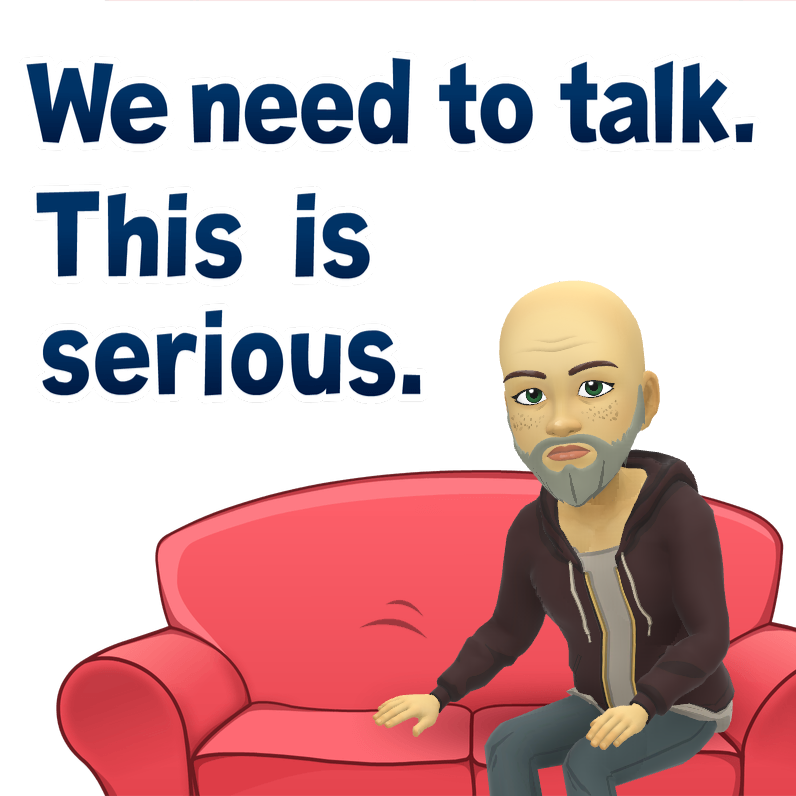
The moment the pieces of the puzzle clicked into place, the realisation that ADHD might be the explanation for so many of my lifelong quirks, was less a moment of despair and more one of… liberation. Finally! There was a potential reason why my brain felt like a perpetual pinball machine, why focus could be so elusive, and why I could start a dozen tasks without finishing a single one. This wasn't about finding an excuse; it was about finding an explanation. And honestly, I was quite excited to share this newfound understanding with the people closest to me. Because I've never viewed ADHD as an illness – in fact, as you'll have gathered, I see many of its traits as superpowers – my approach to sharing my diagnosis was probably a little… unconventional. There was no solemn announcement, no tearful confession. Instead, it tended to be delivered with a dash of humour and a large helping of my characteristic upbeat enthusiasm. It often sounded something like, "You know how I always [insert quirky ADHD trait here]? Well, it turns out there's a reason for that! I've got ADHD!" My intention wasn't to elicit sympathy but to offer an explanation, a way to say, "Hey, I'm not deliberately being forgetful/distracted/all-over-the-place; this is just how my brain works." It was a way to gently push back against the internalised narrative of being "thick" or "stupid." However, the reception wasn't always the celebratory parade I might have naively hoped for. While ADHD awareness has certainly grown, thanks in part to the openness on social media, there's still a significant segment of the population who view it with scepticism. Some see it as a trendy label, an easy excuse for perceived shortcomings. Hearing this, especially from those I cared about deeply, was genuinely upsetting. It felt like they were dismissing my lifelong struggles, implying that I was somehow using this diagnosis as a convenient crutch to explain away aspects of my behaviour that they found… well, different. And let's face it, my way of navigating life does tend to be a little off the beaten track (more on that in a future chapter, as promised!). This scepticism made me feel incredibly vulnerable, as if I were indeed trying to make excuses for the very fabric of who I am. It brought back those old feelings of inadequacy, the whispers of being "not quite right." To counter this, I found myself sharing videos and articles about ADHD, hoping to offer a glimpse into my internal world, to illustrate the very real challenges I face with focus, organisation, and emotional regulation. And, ever the people-pleaser, there was an underlying hope that by understanding the "why" behind some of my more… endearing (I hoped!) traits, those around me might not only understand me better but perhaps even like me a little more. It's a constant yearning for connection and acceptance. The reality is, the naysayers may never fully grasp the nuances of living with ADHD unless they or someone they love experiences something similar. But perhaps, and this is a significant driving force behind this book, by putting my experiences down in black and white, I can offer a window into my world. Maybe, through these pages, those closest to me, and even those who hold preconceived notions, can gain a deeper understanding of the daily realities of navigating life with an ADHD brain. It's a hope rooted in a desire for connection, for empathy, and for a little less of that gnawing feeling that I need to constantly explain – and justify – the way I am.

For those of us whose brains operate at a slightly different frequency, the right tools and systems aren't just helpful – they're essential for navigating the often-chaotic world of small business. It's about creating a framework that supports our strengths while mitigating the challenges that can come with ADHD, such as distractibility and difficulties with organisation. Over years of trial and error, I've discovered a few key allies in this endeavour. Whiteboard: Your Visible Anchor Digital tools are powerful, but sometimes the simplest solutions are the most effective. A whiteboard in your workspace can be a game-changer. Its constant visual presence acts as an immediate reminder for key tasks, both work and personal. Unlike information hidden within a device, it's there, in plain sight, every time you glance around. It's perfect for jotting down top priorities, quick reminders, and even those fleeting thoughts that might otherwise vanish. Plus, the tactile satisfaction of physically wiping off completed tasks offers a small but significant dopamine hit! CRM (Customer Relationship Management): Your Contact Hub In essence, a CRM is a system for organising and managing all your interactions with contacts, from initial enquiries to loyal customers. It's about keeping track of who you've spoken to, what you discussed, and where they are in the buying cycle. Using a CRM, especially one with a visual drag-and-drop pipeline (like HubSpot or even the list feature in Trello), allows you to see at a glance where your relationships stand and ensures no potential connection falls through the cracks. This centralisation is crucial for staying organised and nurturing those valuable business relationships. Visit Hubspot here Google Suite: Your Integrated Powerhouse Google's suite of free and user-friendly tools offers seamless integration, which can be a significant advantage for streamlining workflows: Google Sheets: For data tracking, list-making, and organising information. Google Forms: For easy creation of surveys and feedback collection. Google Slides: For visually presenting ideas and information. Google Calendar: For scheduling and reminders to manage your time. Google Drive: For central cloud storage of all your important files. Google Tasks: A simple yet powerful to-do list that integrates directly with Gmail, keeping your tasks visible within your inbox. Visit Google Tools here Trello (or Similar Kanban Tools): Your Visual Organiser Platforms like Trello, with their visual board and card system, provide a fantastic way to organise projects, tasks, and ideas. Creating boards for different clients, projects, or even stages of a process allows you to see the big picture and track progress at a glance. The drag-and-drop functionality makes it intuitive and easy to manage, acting as a visual brain dump for all your ongoing activities. Visit Trello here Fireflies.ai (or AI Meeting Assistants): Your Memory Backup AI-powered meeting assistants can be invaluable for capturing and summarising meeting content. They record conversations and provide transcripts and summaries, highlighting key decisions and action points. This eliminates the reliance on often-fallible memory and ensures you don't miss crucial details. Integrating these summaries into your project management tools further enhances organisation. Visit Fireflies here Phone App Organisation (Tip): To minimise digital distraction and overwhelm, organise your phone apps into folders on your home screens. Aim for no more than one or two swipeable pages, keeping your most frequently used apps easily accessible within those folders. This reduces scrolling and mental clutter. By strategically implementing these kinds of tools and systems, the ADHD entrepreneur can build a supportive structure that fosters productivity, reduces overwhelm, and allows their unique strengths to shine through. It's about finding what works best for your individual needs and creating an environment where you can thrive.

Ah, hyperfocus. It’s like the superhero power that comes with a tricky set of instructions. When it kicks in, it can feel like the ultimate productivity hack, an almost superhuman ability to laser-focus on a task to the exclusion of everything else. But it can also be a deep rabbit hole that sucks us in, making us lose track of time, responsibilities, and even basic needs. And this book? Well, this book is a perfect case study in the glorious, and slightly chaotic, power of my hyperfocus in action. Three days ago. That’s when the seed of this book was planted in my brain. I honestly can’t even recall the initial trigger – a fleeting thought, a random connection, perhaps just the universe deciding it was time. But once that idea took root, there was no gentle nurturing, no thoughtful planning. It was an immediate, urgent imperative. I had to start. Right then. The concept of adding it to a to-do list for future consideration? Utterly foreign. My brain had decided, and that was that. The metaphorical starting gun had fired, and I was off to the races. And it didn’t stop at simply thinking about it. Chapter One had to be written. Immediately. And once it was done, it wasn’t enough to just save it on my computer. It needed to be out there, in the world, even in its nascent form. So, up it went onto the website. A small victory, a tangible manifestation of this sudden, all-consuming drive. Then came the validation. As a card-carrying people-pleaser, the positive feedback from those first readers – friends who I knew would actually sit down and absorb the whole thing (bless their non-ADHD attention spans!) – was like rocket fuel. Their enthusiasm and praise sent a surge of dopamine through my system, further cementing my focus on this new project. Suddenly, anything else I was supposed to be doing took a backseat. Client work? Household chores? That important phone call I needed to make? All relegated to the periphery as I plunged headfirst into the next chapter. This is the exhilarating, yet potentially problematic, nature of hyperfocus. On the one hand, it allows for periods of intense productivity, where you can churn out work at an astonishing rate, completely absorbed in the task at hand. It’s in these moments that the “superpower” aspect really shines. Ideas flow freely, connections are made effortlessly, and you can feel an incredible sense of accomplishment. However, the flip side is the tunnel vision. When hyperfocus takes hold, it can be incredibly difficult to break free, even for essential things. Time ceases to exist. The gentle nudges of hunger, the insistent reminders of other obligations, the subtle cues from your body that you need to move or take a break – they all get drowned out by the intensity of the current focus. This can lead to neglected responsibilities, missed appointments, and a general imbalance in life. For entrepreneurs with ADHD, hyperfocus can be a powerful tool when directed effectively. It can allow us to dive deep into creative problem-solving, develop innovative ideas, and power through challenging tasks. However, without conscious awareness and strategies for managing it, it can also lead to burnout, procrastination on less engaging but equally important tasks, and strained relationships due to perceived neglect. My sudden immersion in writing this book is a perfect example. The initial burst of energy and focus allowed me to get started quickly, but the subsequent neglect of other responsibilities highlights the potential downside. It’s a reminder that while hyperfocus can be a valuable asset, it needs to be harnessed, not just followed blindly. Learning to recognise when it’s beneficial and when it’s becoming detrimental is a crucial skill for any ADHD entrepreneur. It’s about riding the wave when it’s productive but also knowing when to consciously steer back towards the shore before you’re completely swept away.

Time. It's a fundamental construct that governs our lives and businesses. For many, it's a predictable, linear progression. For those of us with ADHD, it can feel more like a fluid, unreliable substance – something we struggle to grasp, estimate, and navigate effectively. The concept of "time blindness" is often used to describe this disconnect, and it's a challenge that I, and I know many other ADHD entrepreneurs, grapple with daily. One of the most common manifestations of this time blindness is a profound lack of awareness of the present moment in relation to the future. I might have a deadline looming, a crucial meeting scheduled, or a simple task that needs doing, yet the urgency often doesn't register until it's almost upon me. It's not procrastination in the traditional sense; it's more like the future exists in a hazy, distant realm that doesn't quite feel real until it suddenly crashes into the present. Then there's the wildly inaccurate estimation of how long tasks will actually take. In the throes of hyperfocus, especially, minutes can feel like seconds, and hours can vanish into thin air. What I anticipate will be a quick "ten-minute job" can easily morph into a multi-hour deep dive, leaving other pressing matters completely neglected. It's like my brain operates on its own internal clock, one that rarely aligns with the standard 24-hour cycle. Your example of the impending Zoom call is a classic illustration of this time discombobulation. Knowing you have a meeting in ten minutes would, for many, signal a need to wrap up current activities and prepare. But for the ADHD brain, that ten-minute window can suddenly seem like an eternity, a vast expanse of potential productivity. "I can definitely squeeze in putting a wash on!" the internal monologue might declare. But then, the inevitable distraction strikes – a rogue speck of dust. And, as anyone with ADHD knows, a single speck of dust can be the gateway to an entire house-cleaning odyssey. The result? Either a frantic, slightly flustered arrival to the Zoom call, or yet another unfinished task added to the ever-growing list. The intention was there, but the awareness of the finite time available, and the ability to prioritise accordingly, simply wasn't. This lack of temporal awareness extends to planning and scheduling. When someone asks how long a project will take, my initial estimate is often wildly optimistic, based on the ideal scenario where my focus remains unwavering and no unexpected distractions arise (a scenario that, let's be honest, is about as likely as finding a unicorn in my garden). This can lead to over-promising and under-delivering, creating unnecessary stress and potential disappointment. Interestingly, my relationship with time seems to flip entirely as the day progresses. While many people find their energy waning in the evening, my brain often decides that the late hours are the perfect time to ignite. Around 11 pm, when the world is quieting down and others are preparing for sleep, I can suddenly find a surge of focused energy. A task that seemed insurmountable during the day can become intensely engaging, leading to hours of hyperfocused work. The concept of a "reasonable" bedtime goes out the window, and I might find myself finally drifting off to sleep around 3 am, only to wake up a few hours later, surprisingly energised and ready to pick up where I left off (that is, if a new, more compelling distraction hasn't presented itself!). This nocturnal productivity, while sometimes beneficial, further highlights the disconnect from conventional time structures. It's like my internal rhythm operates on its own schedule, often out of sync with the demands of a typical workday. Navigating the world of entrepreneurship with this wonky sense of time requires conscious strategies and a healthy dose of self-compassion. It's about acknowledging that time blindness is a real challenge and finding ways to work with it, rather than constantly fighting against it. This might involve external aids like alarms and visual timers, breaking down large tasks into smaller, more manageable chunks, and building in buffer time for those inevitable rabbit holes. It's a continuous learning process, a constant recalibration in our relationship with the elusive clock.
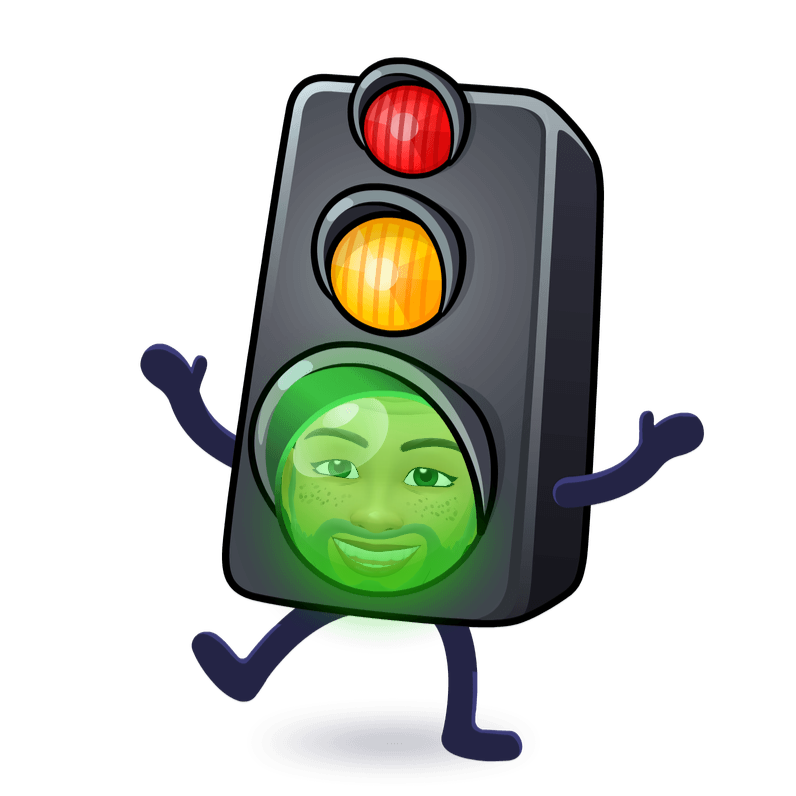
The allure of self-employment often comes with a strong DIY ethos. We strike out on our own, fueled by passion and a belief in our vision. But the term "self-employed" can be misleading. It doesn't, and shouldn't, mean doing everything ourselves. This path inevitably leads to overwhelm, burnout, and a feeling of being perpetually stuck, questioning whether we're truly cut out for this entrepreneurial life. My own journey started with a desire to escape the daily grind of retail, leading me to the idea of building websites for local businesses. Initially, I wasn't the tech wizard; I was the talker, the salesman. I partnered with the developer who built my shoe shop's website. I sold, he built. A simple, effective division of labour for a while. However, as the business grew, I felt a disconnect. While the technical execution of the websites was sound, I felt they lacked a certain creative flair. So, in true ADHD hyperfocus mode (though I didn't know it then!), I decided to learn the trade myself. This involved countless hours of after-hours research and a significant internal battle. I’d always seen myself as a salesman, not someone particularly technical or creative. But to scale, I realised I needed to understand the nuts and bolts of website development to lead a team effectively, rather than just blindly trusting others. The thought of being back at square one, relying solely on someone else's interpretation of my vision, spurred me on. The real challenge in scaling any business is the need for extra hands. As a self-proclaimed (and perhaps slightly unrealistic) perfectionist, the idea of entrusting others with work that bore my company's name was daunting. Could they possibly meet my standards? Would they understand the vision as clearly as I did? Then, I stumbled upon a piece of wisdom that proved to be a game-changer: expect no more than 85% perfection from your staff. This simple statement was liberating. Did things really have to be absolutely flawless? And, more importantly, was my definition of "perfect" the only valid one? This shift in perspective allowed me to be less rigid in my expectations and open the door to building a team. One of the most rewarding ways I found to bring in help was through apprenticeships. It was incredibly fulfilling to watch young individuals develop their skills and grow within the business. I also regularly welcomed interns from a local university. These bright, enthusiastic students, often studying various aspects of marketing, were genuinely appreciative of the opportunity to work on real client projects, gaining invaluable experience beyond theoretical case studies. This stream of talent has been a constant source of energy and support for over a decade now. The fundamental truth of business growth is this: you cannot do it all alone. Finding a way to bring help on board is not a sign of weakness; it's a strategic imperative. It requires a willingness to let go of some control, to adjust your expectations of "perfect," and to trust in the potential of others. This journey of delegation will not only free up your own time and energy to focus on the bigger picture but will also develop your man-management skills and provide a profound sense of satisfaction in nurturing the careers of those who join your team. It's about building something bigger than yourself, and that requires sharing the load and trusting others to contribute their unique talents.
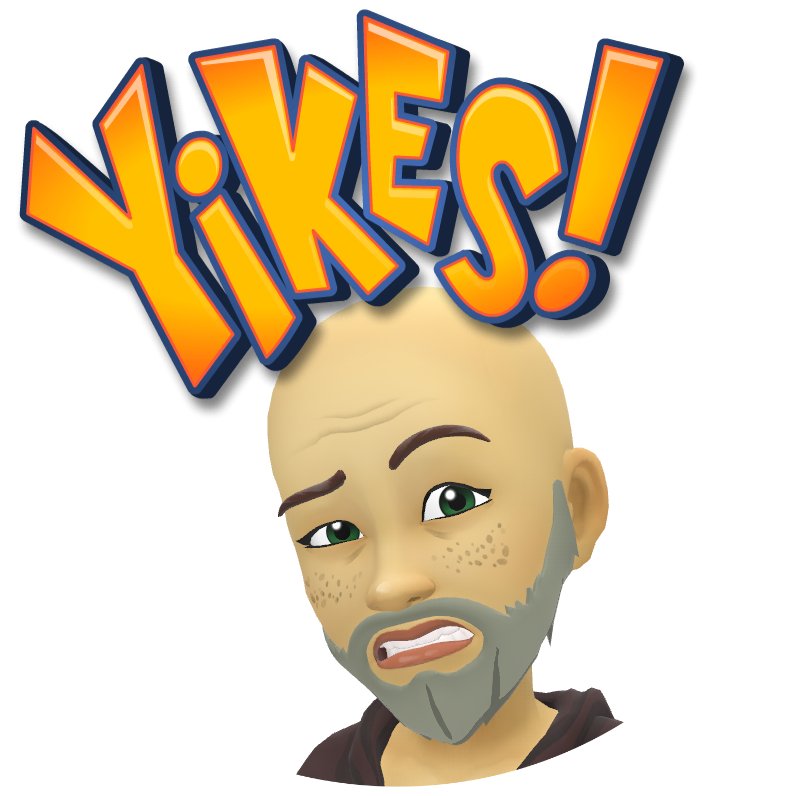
The Late Diagnosis: Phil Gee's Story of Self-Discovery Where do you even begin to unravel a lifetime of feeling… different? For me, Phil Gee, that journey of understanding started surprisingly late, at the age of 53. For years, a nagging voice in the back of my head had whispered insidious lies – that I was slow, a bit thick, just not quite with it. Little did I know, the reality was far more nuanced, and ultimately, empowering. My early school years were… breezy, to say the least. I sailed through, not exactly excelling academically, but certainly making my presence known. The annual school reports painted a familiar picture: “chats too much,” “needs to focus more,” “easily distracted.” Sound familiar to anyone? My mum, a force of nature in her own right, had a unique perspective on education. The daughter of a fiercely independent, if somewhat unconventional, Polish man who believed life was the best teacher, she wasn’t one for pushing traditional academics. He, unable to read or write English himself, refused to send her to school and instead took her daily to The Kardomah coffee shop on Lord Street in Southport, imparting his wisdom over cups of tea. Considering she went on to juggle single motherhood and run multiple businesses single-handedly well into her seventies, perhaps there was something to his unconventional curriculum! (See? There I go again, off on a tangent! It’s a recurring theme, you’ll learn.) So, at 16, qualifications were the furthest thing from my mind. I didn’t even bother turning up for the exams. The allure of an underground den, painstakingly crafted with my mates in the Southport sand dunes, proved far more compelling than the sweaty confines of the school sports hall where our peers were diligently filling in answer sheets. Priorities, eh? My entry into the world of work, a story I’ll delve into with more ADHD-related detail later in the book, began in retail. I joined Marks & Spencer on a Youth Training Scheme (YTS – a blast from the past for some of you!). Despite my lack of formal education, within four years, I’d become the first male supervisor in the branch. Who needs those pesky qualifications, I thought with the naive confidence of youth! That confidence took a slight knock when I set my sights on management. The brick wall of “degree holders only” slammed down pretty hard. Without even an O’Level to my name, that ambition was swiftly curtailed. The next fifteen years saw me navigating the fast-paced world of high street fashion, managing multiple branches for brands like The Gap and, most notably, River Island, where I was entrusted with overseeing a staggering eighteen stores! Again, not too shabby for a lad who’d prioritised sand dunes over syllabuses. Then came GOSH, my own venture – a women’s and children’s shoe shop that blossomed into four thriving locations across Merseyside. By this point, however, the novelty of retail had worn thin, and the daily contemplation of women’s bunions was starting to lose its appeal. Serendipitously, I was having a website built for the shoe shops and, like a moth to a digital flame, I fell head over heels in love with the internet. This was 2007 – the Wild West of the online world, pre-social media saturation, before smartphones and tablets became ubiquitous. Seventeen years later, that initial spark still burns bright, and the digital realm remains my professional playground. This digital journey eventually led me to a significant life change – a move from my beloved Liverpool to the bustling metropolis of London. My wonderful daughter, Olivia, was now 25 and forging her own path. I was single, and a restless energy, was pushing me towards a new horizon. Underlying this desire for change was a growing unease. My mum had recently been diagnosed with dementia, and as I reflected on my own quirks and behaviours, a terrifying thought began to take root: was I experiencing the early signs myself? In typical Phil fashion, rather than facing this fear head-on, I did what I’d always done – buried my head in the sand and ran. Two hundred miles south, to be precise!! I booked a short, one-month let in a room in a shared house, a toe-dip into the London waters. Little did I know, that single month would alter the course of my life irrevocably. On my very first day, one of the other tenants casually mentioned, amongst other things, that she had ADHD. At the time, the term conjured up a vague image of hyperactive children bouncing off the walls. It meant little more to me than that. However, on my last evening in the shared house, she dropped a bombshell. “You know, Phil,” she said with a knowing giggle, “I think you might have ADHD too.” My immediate reaction wasn’t offense, but genuine curiosity. “Why on earth would you say that?” I asked, genuinely perplexed. Her response was a cascade of observations, delivered with the blunt honesty of someone who recognised the signs. “Well,” she began, “for starters, there was the porridge incident. Six times in one month, you put your ‘two-minute porridge’ in the microwave, only to get completely sidetracked and end up going out for breakfast!” The absurdity of it struck me – a potent cocktail of impatience for those agonizing two minutes and a complete, almost immediate, forgetting that the breakfast was already in progress. She continued, pointing out my constant chirpiness, how seamlessly I’d integrated with the five housemates as if I’d been there for years (a classic masking strategy, I’d later learn), and my almost compulsive tidying of the communal areas. Apparently, these were all “tell-tale signs.” I wasn’t upset; I was… intrigued. I promised her I’d look into it when I returned to Liverpool the following week. Her parting advice was to listen to a book called Faster Than Normal by Peter Shankman. “You won’t have the patience to read it,” she’d accurately predicted. The moment I started my four-hour drive back north, I downloaded the audiobook and pressed play. Peter Shankman’s words hit me like a lightning bolt. The book was nearly six hours long, and I found myself extending my journey into North Wales just so I could finish it. It was that good. Suddenly, so many things clicked into place. The “slowness,” the “thickness,” the feeling of being perpetually “stupid” or just “getting old” – all of it could potentially be attributed to this thing called ADHD. Wow. Just… wow. And that, in a nutshell, is how I stumbled upon the realisation that had been lurking beneath the surface for over five decades. A chance encounter, a perceptive observation, and a life-changing audiobook. The journey to understanding myself had finally begun
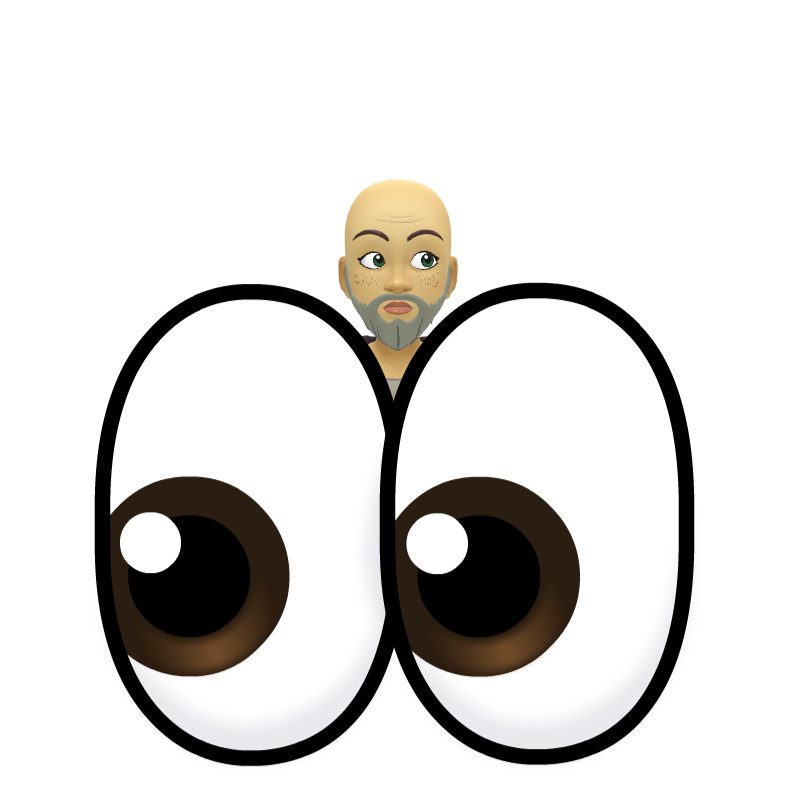
In today's digital age, your online presence is often the first impression you make. Whether you're a business owner, a job seeker, or simply someone navigating the social landscape, what comes up when you Google your own name can have a significant impact. It's not just about vanity; it's about understanding your digital footprint and how others might perceive you – especially when they're doing their "due diligence". Think about it. Before you meet someone professionally, consider hiring a service, or even agree to a first date, what's one of the first things you might do? You'll likely tap their name into that little search bar. And guess what? Other people are doing the exact same thing with you. Why is Googling Yourself So Important? It's about understanding the narrative that's being woven about you online. Here's why taking a peek at your search results is crucial: First Impressions Matter (Online Too): Your Google results are often the first glimpse someone gets of you. Are they seeing professional profiles, positive mentions, or something less desirable? This initial impression can heavily influence their decision to connect, collaborate, or hire you. Due Diligence is Standard Practice: Whether it's a potential employer checking your background, a prospective client researching your credibility, or a business partner assessing your reputation, due diligence is a common and sensible step. They want to ensure they're dealing with someone trustworthy and reputable. Your Google results are a key part of this process. Uncovering the Unexpected: You might be surprised by what you find. Old social media posts you'd forgotten about, mentions in news articles (good or bad), or even outdated business listings could be shaping perceptions without your knowledge. Identifying Potential Issues: If negative or inaccurate information surfaces, knowing about it is the first step to addressing it. You might need to update outdated profiles, engage with negative reviews (carefully and professionally), or even take steps to remove inaccurate content. Understanding Your Competition (If Applicable): If you're a business owner or freelancer, Googling yourself can also give you insights into what your competitors' online presence looks like. What are they doing well? Where are you lagging behind? Protecting Your Personal Brand: For coaches, consultants, and anyone whose personal brand is integral to their business, your online reputation is paramount. Regularly checking your Google results allows you to proactively manage and protect that brand. What Should You Be Looking For? When you Google yourself, pay attention to: Your Own Profiles: Do your LinkedIn, Twitter, Facebook (if public), and other relevant profiles appear prominently? Are they up-to-date and presenting the image you want to convey? Mentions of Your Name or Business: Are there articles, blog posts, or reviews that mention you or your company? What is the overall sentiment? Images: What kind of images are associated with your name? Are they professional and representative of your brand? Outdated or Inaccurate Information: Are there old websites, social media profiles you no longer use, or incorrect contact details floating around? Anything You Wouldn't Want a Potential Client or Employer to See: Be honest with yourself. Would any of the results give someone a negative or inaccurate impression? Taking Control of Your Online Narrative Googling yourself isn't just about observing; it's about taking proactive steps to shape your online narrative. This might involve: Optimising Your Professional Profiles: Ensure your LinkedIn, website, and other key profiles are complete, up-to-date, and keyword-rich. Creating High-Quality Content: Regularly publishing valuable content (blog posts, articles, videos) can help push positive information higher in the search results. Engaging Professionally on Social Media: Be mindful of what you post and how you interact online. Seeking Positive Reviews and Testimonials: Encourage satisfied clients or colleagues to leave reviews on relevant platforms. Addressing Negative Feedback Professionally: If you encounter negative reviews, respond thoughtfully and aim to resolve the issue. In Conclusion: In today's interconnected world, your online presence is a vital part of your personal and professional identity. Regularly Googling yourself is a simple yet powerful exercise that allows you to understand how others might perceive you, identify potential issues, and take proactive steps to manage your digital footprint. Don't leave your online reputation to chance – take control of your narrative and ensure that when people search for you, they find the best possible representation of who you are and what you offer. So go ahead, give yourself a Google. You might be surprised by what you discover.

Decoding Your Website Numbers: A Simple Guide for independent Businesses Ever feel like the data behind your website is a secret language? You're not alone! Lots of local businesses find the world of website analytics a bit baffling, especially when it comes to something called SEO (Search Engine Optimisation). But don't worry, understanding the basics of your website traffic doesn't need a tech degree. Think of it like understanding how many people walk into your physical shop and what they do while they're there. Today, we're going to break down some common website terms using information from a tool called Independent Analytics. While different tools might show things slightly differently, the core ideas are the same, and understanding these will help you make smarter decisions about your online presence. Imagine Your Website as Your Shop… Let's use a simple analogy to make sense of these numbers: Views = People Looking Through Your Shop Window: Every time someone lands on a page of your website, it's like they're glancing at your shop window. If they click through to a few different displays, that's more "views." Visitors = Unique People Entering Your Shop: This tells you how many different individuals have visited your website. Even if the same person comes back tomorrow, they're still counted as one unique visitor (unless they use a different device, like their phone instead of their computer). Sessions = A Single Shopping Trip: When someone arrives at your website and browses around until they leave (or become inactive for a while), that's one "session." They might look at several pages during that one visit. Bounce Rate = People Who Look in the Window and Leave Straight Away: This is the percentage of people who land on just one page of your website and then leave without clicking anywhere else. A high bounce rate might mean your "window display" (your landing page) isn't grabbing their attention or isn't what they were expecting. Views Per Session = How Many Displays People Look At During Their Visit: This number tells you, on average, how many pages people explore during a single visit to your website. A higher number here suggests people are interested in what you have to offer and are clicking around to see more. Session Duration = How Long People Spend Browsing in Your Shop: This is the average amount of time visitors spend on your website during a single session. Longer session durations can indicate that people are engaging with your content and finding what they need. Why Does This Matter for Your Business? Understanding these simple metrics can give you valuable insights into how people are interacting with your online presence: Are people finding your website? (High views and visitors are a good sign!) Are they finding what they're looking for? (A lower bounce rate and higher views per session and session duration suggest they are.) Are there pages on your website that aren't working as well as others? (A high bounce rate on a specific page might indicate a problem.) Taking the First Step You don't need to become a data expert overnight! Just starting to pay attention to these basic numbers in your website analytics can make a big difference. It's like keeping an eye on how customers behave in your physical shop – it helps you understand what's working and what you might need to tweak. At Social Media Academy, we understand that SEO and website analytics can feel overwhelming. That's why we offer support and guidance to local Southport businesses like yours. We can help you understand your website data and use it to attract more customers and grow your business online. Ready to demystify your website data? Get in touch with Social Media Academy today for a friendly chat about how we can help!

Running a small business is a whirlwind. You're the CEO, the marketing manager, the customer service guru, and everything in between. It's exciting, but let's be honest, it can also be incredibly overwhelming. Sound familiar? What if we told you there's a way to lighten your load, streamline your tasks, and even reclaim some precious personal time? Enter Artificial Intelligence (AI) . Now, before you picture complicated robots and futuristic scenarios, let's be clear: AI for small businesses is about simple, accessible tools that can act like your very own virtual assistant. Think of it as having extra help without the extra headcount (or the coffee breaks!). Here are some easy-to-understand ways AI can simplify your business and your life: 1. Say Goodbye to Content Creation Overwhelm: Staring at a blank screen, wondering what to post on social media or write for your website? AI can be your creative spark! Simple AI writing tools can help you: Brainstorm ideas: Just type in a topic, and AI can generate a list of engaging content ideas. Draft social media captions: Get a head start on writing catchy and attention-grabbing captions in seconds. Outline blog posts: Overcome writer's block by having AI create a basic structure for your articles. Imagine: Spending less time agonising over what to say and more time connecting with your audience. 2. Effortless Scheduling & Automation: Juggling multiple social media platforms and trying to remember to post at the right times can be a headache. AI-powered scheduling tools can: Suggest optimal posting times: Based on your audience's activity, AI can recommend the best times to schedule your content for maximum visibility. Automate repetitive tasks: Set up automated responses to frequently asked questions on social media, freeing up your time for more complex inquiries. Imagine: Your social media running smoothly in the background, even while you're focused on other crucial tasks or enjoying some well-deserved downtime. 3. Smarter Customer Interactions: Providing excellent customer service is vital, but it can also be time-consuming. AI can help you: Implement simple chatbots: Answer basic customer questions 24/7, providing instant support and freeing you up for more complex issues. Personalise customer experiences: AI can help you understand customer preferences and tailor your communication accordingly. Imagine: Happy customers getting their questions answered quickly, even outside of your regular business hours. 4. Targeted Marketing Made Easier: Reaching the right people with your marketing efforts is crucial for small businesses. AI can help you: Identify potential customers: AI-powered analytics can help you understand your target audience better and identify new potential customers. Optimize your advertising: AI can help you refine your online advertising campaigns to reach the most relevant audience and maximize your budget. Imagine: Your marketing efforts becoming more effective, leading to more leads and sales without you spending hours on manual targeting. 5. Streamlining Everyday Admin: Even the smallest businesses have administrative tasks that can eat up valuable time. AI can assist with: Basic accounting tasks: Some AI tools can help with invoicing and tracking expenses. Email management: AI can help you prioritize emails and even draft basic responses. Imagine: Less time spent on tedious admin tasks and more time focused on growing your business. Ready to Simplify Your Business and Your Life with AI? These are just a few simple ways AI can make a real difference in your small business. If you're feeling overwhelmed and looking for practical, easy-to-implement solutions, our " AI Made Easy for Social Media " course is designed specifically for you! We'll demystify AI and show you step-by-step how to use these powerful tools to streamline your social media, reclaim your time, and ultimately, simplify your business and your life. Click here to learn more and sign up for the "AI Made Easy for Social Media" course today! Don't let the fear of the unknown hold you back. Embrace the power of AI and discover how it can help you work smarter, not harder, and finally achieve that elusive work-life balance.

What Exactly IS AI? (In Simple Terms, We Promise!) You've probably heard the buzzword "AI" everywhere lately, especially in the world of social media. Maybe you picture futuristic robots taking over the world, or maybe it just sounds like a bunch of complicated tech jargon. But don't worry, understanding AI doesn't require a degree in computer science! In this post, we're going to break down what AI really is in simple terms, debunk some common myths, and touch on a couple of key ideas you might hear: machine learning and natural language processing. Get ready to say goodbye to AI confusion! Myth Busting: AI Isn't Always What You Think Before we dive in, let's clear up a few common misconceptions: AI isn't always a physical robot: While robots can be powered by AI, most of the AI you'll encounter in your daily life (and on social media) is software running on computers. AI isn't about to take over the world (yet!): The AI we're talking about for social media is designed to help with specific tasks, not to become sentient and rule humanity. AI doesn't have to be super complicated: While the underlying technology can be complex, using AI tools can be surprisingly straightforward. So, What IS AI Then? (The Simple Explanation) Think of Artificial Intelligence (AI) as a way to make computers think and act more like humans. Instead of just following strict instructions, AI allows computers to learn, solve problems, and make decisions. Imagine teaching a dog a new trick. You don't give it a step-by-step instruction manual for every single muscle movement. Instead, you show it what you want it to do, reward it when it gets it right, and it learns over time. AI works in a similar way – we give computers data and they learn patterns from it to perform tasks. Two Key Concepts You Might Hear: Now, let's touch on two terms you might encounter when talking about AI: Machine Learning (ML): This is a big part of AI. Think of it as the dog learning the trick. Instead of being explicitly programmed for every single scenario, machine learning allows computers to learn from data. The more data they get, the better they become at their task. For example, a social media platform might use machine learning to learn what kind of content you like to see and then show you more of it. Natural Language Processing (NLP): This is all about how computers understand and process human language – like the words you speak or type. Think of it as the computer being able to understand your commands. NLP allows AI to do things like: Understand the sentiment of comments on your posts (are people happy or angry?). Generate captions for your images based on what's in them. Answer simple questions you might ask a chatbot. AI in Action: How It Helps Your Social Media In the context of your business's social media, AI can be a real game-changer. It can help you: Generate engaging content: AI writing tools can help you brainstorm ideas and even write initial drafts for your posts. Schedule your posts efficiently: Some scheduling tools use AI to suggest the best times to post for maximum engagement. Understand your audience better: AI analytics can help you identify trends and understand what kind of content resonates most with your followers. The Bottom Line: AI is a Tool to Help You Ultimately, AI is a powerful tool that can help you simplify your social media management and free up your time to focus on other important aspects of your business. It doesn't have to be scary or overly complicated. By understanding the basic concepts, you can start exploring the many ways AI can work for you. Ready to dive deeper? Join our "AI Made Easy for Social Media" workshop to learn practical ways you can start using AI tools today!
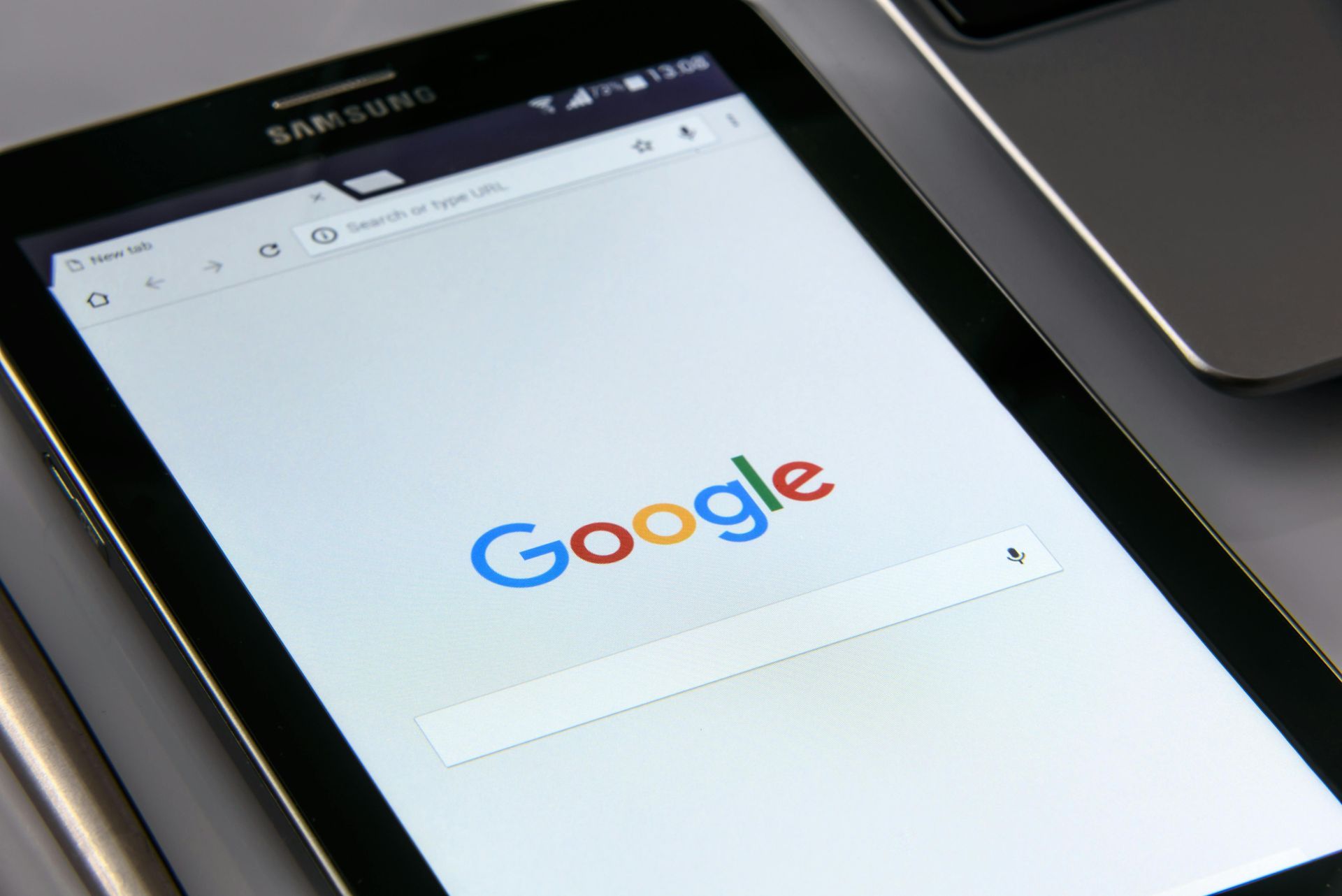
At Social Media Academy, we coach consultants and coaches on how to leverage the full potential of social media marketing. One of the most effective strategies for growing your business and building credibility is by asking clients for Google reviews. In today's digital world, online reviews play a pivotal role in attracting new clients and establishing trust. If you're not already asking your clients for reviews, here’s why you should start doing so today. Boost Your Online Credibility and Reputation As a coach or consultant, your reputation is everything. Potential clients are more likely to trust someone who has positive reviews, as they provide social proof that your services deliver results. Google reviews are one of the first things people see when they search for your business, and having a collection of glowing testimonials helps establish your authority in your field. When you ask your clients to leave reviews, you’re not only gaining their trust but also building a solid foundation of credibility that speaks volumes to new prospects. Reviews show that you are a proven expert who others have had a positive experience with—creating trust even before the first consultation. Improve Your Search Engine Rankings Google reviews don’t just help with credibility—they also play a crucial role in your business’s search engine rankings. Google uses reviews as one of its ranking factors, meaning the more reviews you have, the higher you can rank in local search results. When clients leave reviews, they help your business show up in searches related to coaching or consulting services in your area, giving you more visibility and making it easier for new clients to find you. The more positive reviews you accumulate, the better your chances of ranking higher, which means more potential clients will discover your services. Enhance Client Engagement and Build Relationships Asking for a Google review isn’t just about asking for feedback; it’s an opportunity to continue engaging with your clients after your work together is done. When you follow up and request a review, you’re showing your clients that you care about their opinions and value their feedback. This small act of communication can strengthen the relationship and encourage loyalty. Moreover, when clients see that you genuinely care about their experience, they are more likely to continue referring others to you. Building positive, long-term relationships with your clients through reviews is a powerful tool for ongoing success. Generate More Referrals Word of mouth is still one of the most effective ways to grow a coaching or consulting business, and Google reviews amplify that by offering social proof to potential clients. When a client leaves a positive review, they are essentially referring your services to everyone who reads it. A strong set of reviews can lead to a ripple effect, with clients sharing their positive experiences with their network. The more reviews you have, the more likely you are to attract clients who have been influenced by others’ opinions and experiences. Essentially, each review serves as a personal recommendation for new clients. Gain Valuable Feedback for Improvement While positive reviews are always great, Google reviews also give you a chance to receive constructive feedback from clients. Understanding what your clients value most about your services—or where there’s room for improvement—can provide valuable insights that help you fine-tune your offerings. This feedback loop can help you evolve your services, improve client experiences, and make your coaching or consulting business even stronger. Additionally, responding to reviews (both positive and constructive) demonstrates professionalism and a commitment to continuous improvement. Increase Client Trust with Authentic Reviews Google reviews are more authentic than testimonials you place on your website, simply because they come from real clients who are not incentivized to share only positive feedback. A diverse set of reviews that include both your strengths and areas for improvement can provide a more authentic view of what potential clients can expect. This authenticity is key in attracting clients who value transparency. People appreciate seeing a mix of experiences that reflect genuine service delivery, rather than just the polished versions you choose to showcase yourself. Create a Competitive Advantage In the highly competitive coaching and consulting industry, standing out from the crowd is essential. If your competitors aren’t actively asking clients for reviews or haven’t yet built up a collection of positive testimonials, you have a significant opportunity to gain an edge. By consistently requesting reviews from your clients, you can amass a larger set of glowing feedback, which can differentiate your business and make it easier for clients to choose you over others. People are more likely to select a service provider who is well-reviewed, as they feel more confident in their decision. By encouraging reviews, you’re setting yourself apart from the competition and creating a strong, positive online presence. Showcase Social Proof on Your Website and Marketing Materials When you get Google reviews, you don’t have to keep them confined to your Google Business profile. You can showcase them on your website, social media pages, and other marketing materials. Highlighting client reviews can serve as powerful testimonials that attract even more clients to your business. Potential clients will be more likely to trust your services if they see positive reviews on multiple platforms. This reinforces your credibility and makes it easy for prospects to see that you’re a reliable and reputable coach or consultant. Keep the Momentum Going with an Easy Request The process of requesting a Google review doesn’t have to be complicated. In fact, the simpler you make it for your clients to leave a review, the more likely they are to do it. After a successful coaching or consulting session, send a follow-up email or text with a direct link to your Google review page. You can include a polite, brief request for feedback, and make it as easy as possible for your clients to share their thoughts. If you provide an excellent service, many of your clients will be happy to help and share their positive experiences. By making the process seamless, you can gather more reviews without a lot of effort. Asking every client for a Google review is one of the most effective ways to build your coaching or consulting business. Not only do reviews enhance your credibility and increase visibility, but they also offer valuable feedback and help you build lasting relationships with your clients. In today’s digital world, where online reputation is crucial to success, positive Google reviews can be the difference between attracting new clients and getting lost in the shuffle. At Social Media Academy, we understand how powerful online reviews can be for growing a business. By consistently asking clients for reviews, you can create a strong online presence, attract more clients, and continue to build your coaching or consulting brand with confidence. Start asking for those reviews today, and watch your business soar!
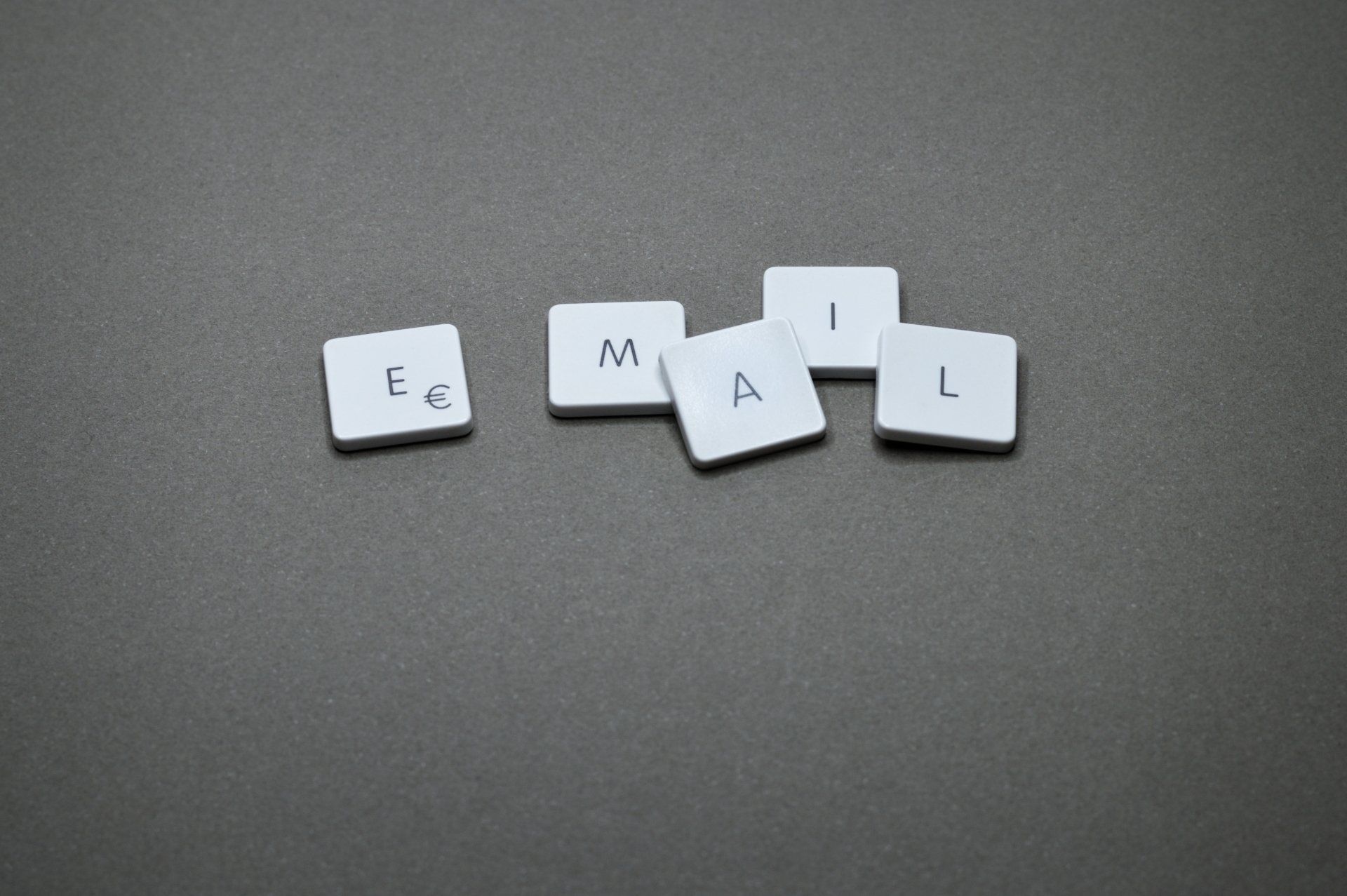
At Social Media Academy, we coach consultants and coaches on how to leverage the power of digital marketing to grow their businesses. One key strategy that is often overlooked but incredibly effective is email marketing. While social media, SEO, and paid ads are all vital parts of a marketing campaign, email marketing offers a unique way to build deeper relationships, nurture leads, and drive conversions. Here’s why email marketing should be an essential part of every coach and consultant’s marketing strategy. 1. Direct Access to Your Audience Unlike social media platforms, where your content can get lost in a sea of posts or be buried by algorithms, email marketing provides you with direct access to your audience. When you send an email, it goes directly into the inbox of someone who has opted in to hear from you. This personal and direct connection allows you to communicate with your audience without relying on third-party platforms to determine who sees your message. For coaches and consultants, this means you can deliver tailored advice, resources, or promotions straight to those who are genuinely interested in your services, improving the chances of engagement. 2. Build and Nurture Relationships Email marketing is one of the best tools for building long-term relationships with your audience. By sending out regular, helpful, and personalized content, you create an ongoing conversation with potential clients. This relationship-building is crucial for consultants and coaches, as clients are more likely to trust and hire someone they feel connected to. Send out a monthly newsletter with helpful tips and advice. Offer exclusive content like eBooks, webinars, or free mini-courses to your subscribers. Regularly check in with your audience through follow-up emails after consultations or workshops. Each email allows you to continue nurturing the relationship and guide leads through their journey with you. 3. Increase Engagement and Conversions Unlike social media, where engagement can fluctuate based on the platform’s algorithm, email marketing gives you full control over how and when your audience engages with your content. Emails can be highly personalized, making it easier to address the specific needs of your leads. A well-crafted email campaign with targeted offers can significantly boost conversions, whether it's for a free consultation, a paid program, or an event. With email marketing, you can segment your audience based on their actions, interests, or previous interactions with your business, ensuring that your messages are relevant and timely. For example, if a subscriber downloaded a free guide on stress management, you can follow up with a tailored offer for your coaching services related to managing work-life balance. 4. Cost-Effective and Scalable For coaches and consultants, one of the biggest advantages of email marketing is its cost-effectiveness. While platforms like Facebook Ads, LinkedIn, or Google Ads require a budget to run paid campaigns, email marketing offers a low-cost option to reach and nurture your audience. All you need is a good email list and an email marketing service like Mailchimp, ConvertKit, or ActiveCampaign to start creating high-converting campaigns. Additionally, email marketing is scalable. Whether you have a handful of subscribers or thousands, you can grow your list without incurring significant additional costs. Plus, email marketing platforms often provide analytics, so you can track open rates, click-through rates, and conversions to continuously improve your campaigns. 5. Highly Measurable and Customizable One of the most valuable aspects of email marketing is its ability to provide measurable results. With each email you send, you can track key metrics such as: Open Rates : Shows how many people are opening your emails, giving you insight into the effectiveness of your subject lines. Click-Through Rates (CTR) : Measures how many recipients clicked on a link within your email, indicating the level of engagement with your content. Conversion Rates : Tracks how many people took the desired action, such as signing up for your services or downloading a resource. With this data, you can optimize your email campaigns, test different subject lines, and refine your approach to get better results over time. 6. Increase Client Retention and Repeat Business For consultants and coaches, a significant portion of your revenue may come from repeat business or ongoing client relationships. Email marketing is a fantastic tool to keep your current clients engaged and remind them of your services. By sending out value-driven content like client success stories, program updates, or new offers, you keep your brand at the top of their mind and encourage them to rebook or recommend you to others. Additionally, you can send personalized offers or exclusive discounts to loyal clients, which increases client retention and fosters long-term relationships. 7. Personalization and Automation One of the most powerful features of email marketing is automation. With email automation, you can set up welcome sequences, follow-up emails, and targeted campaigns that run on autopilot. For example, when someone signs up for your free resources, they can automatically receive a series of emails that nurture them into becoming a paying client. By leveraging automation tools, you ensure that your leads are continuously engaged with minimal effort on your part. Additionally, you can personalize emails to make them more relevant to the recipient, increasing the likelihood that they will take action. 8. Control Over Your Messaging When you rely solely on social media platforms, you are subject to the rules and algorithms of those platforms. With email marketing, you own your list and your message. You have the flexibility to craft and send the exact message you want to your audience without interference from social media algorithms. Moreover, email allows you to speak directly to the pain points and desires of your audience, making your message more personal and powerful. You can even A/B test different messaging strategies to see which one resonates most with your audience. Why Email Marketing is a Must-Have As a coach or consultant, email marketing should be an essential component of your overall marketing strategy. Not only does it allow you to communicate directly with your audience and build lasting relationships, but it also helps increase engagement, conversions, and client retention in a cost-effective and scalable way. By leveraging the power of email marketing, you can position yourself as a trusted authority, nurture leads over time, and ultimately grow your coaching or consulting business. So, if you haven’t already integrated email marketing into your strategy, now is the perfect time to start. At Social Media Academy, we’re here to help you take your business to the next level. If you’re ready to add email marketing to your strategy, let’s work together to create campaigns that deliver results!

As a coach or consultant, you're in the business of transformation. You guide individuals and businesses towards their goals, offering expertise and support. In today's digital landscape, it's tempting to think that a strong social media presence is all you need to attract new clients. While platforms like LinkedIn, Instagram, and Facebook are undoubtedly valuable, relying solely on them is like building your house on rented land. You need a central, owned space – your own website – to truly thrive. At Social Media Academy, we empower coaches and consultants like you to leverage the power of digital marketing. And while social media is a crucial piece of the puzzle, it's just that – a piece. Here's why a dedicated website is non-negotiable for your long-term success and client acquisition: Social Media is a Conversation Starter, Your Website is the Destination Think of social media as a bustling networking event. You can strike up conversations, share valuable insights, and connect with potential clients. However, when someone is genuinely interested in learning more about you and your services, where do you direct them? A link in your bio can only do so much. Your website acts as your digital shopfront, your professional hub. It's where potential clients can: Learn the full story: Go beyond character limits and fleeting posts. Your website allows you to articulate your unique value proposition, your experience, your methodology, and the specific problems you solve in detail. See your expertise in action: Showcase testimonials, case studies, and your portfolio to build trust and credibility. Understand your offerings clearly: Outline your coaching packages, consultancy services, and pricing in a clear and organised manner. Take the next step: Provide clear calls to action that guide visitors towards becoming clients. The Power of Your Own Blog: Establishing Authority and Attracting Ideal Clients Your website is the perfect platform to host your own blog. This is where you can truly shine as a thought leader in your niche. By consistently creating valuable, informative, and engaging blog posts, you can: Demonstrate your expertise: Share your insights, offer practical tips, and address common challenges your ideal clients face. This positions you as a go-to authority in your field. Connect with your audience on a deeper level: Blog posts allow for more in-depth discussions and the opportunity to connect with readers on a personal level. Fuel your social media: Share your blog posts across your social media channels, driving targeted traffic back to your website where they can learn more about your services. Turning Website Visitors into Paying Clients: Making Appointments Easy Your website should be designed to convert interested visitors into actual clients. This means making it incredibly easy for them to take the next step: Clear Calls to Actions (CTAs): Strategically place buttons and links throughout your website that encourage visitors to "Book a Discovery Call," "Schedule a Consultation," or "Download Your Free Guide." Integrated Scheduling Tools: Embed a scheduling tool directly on your website (like Calendly or Acuity Scheduling). This allows potential clients to see your availability and book a convenient time to connect without the back-and-forth of emails. Contact Forms: Provide a simple and accessible contact form for enquiries and questions. Getting Found on Google: Reaching Clients Actively Searching for Your Expertise Social media platforms are excellent for reaching people who are already following you or engaging with relevant content. However, what about those who are actively searching for a coach or consultant with your specific skills and experience? That's where Google comes in. Your website, optimised with relevant keywords, is your key to being found by these highly motivated potential clients. Here's how: Search Engine Optimisation (SEO): By strategically using keywords that your ideal clients are searching for (e.g., "business coach for startups," "leadership consultant for SMEs"), you can improve your website's ranking in Google search results. Blog Content is King for SEO: Each blog post you write targeting specific keywords increases your chances of appearing in relevant Google searches. For example, a blog post titled "5 Strategies to Improve Team Productivity" could attract business owners actively looking for solutions to this problem. Long-Term Visibility: Unlike social media posts that have a limited lifespan, well-optimised website content can continue to attract traffic and leads for months and even years to come. In Conclusion: Own Your Digital Presence Social media is a powerful tool for building awareness and engaging with your audience. However, it should be seen as a vital supplement to your own website, not a replacement. Your website is your digital home, your central hub for showcasing your expertise, building trust, and ultimately, converting interested individuals into paying clients. At Social Media Academy, we understand the importance of a holistic digital marketing strategy. We coach consultants and coaches on how to build a strong online presence, including developing a compelling website that works hand-in-hand with your social media efforts. Ready to take control of your online presence and attract more clients? Contact us today to learn how we can help you build a website that truly serves your coaching or consultancy business. Don't just rent space on social media – own your piece of the internet and watch your business flourish.

Let's have a honest natter about taking your brilliant shop online. You've probably thought about it, maybe even had a quick Google. Here at SMA Websites, we work with local businesses like yours to get you seen online, and we reckon for many of you, selling online could be a real game-changer. But, and this is a big but, it's not all sunshine and digital daisies. Just like running your physical shop, selling online has its ups and its downs. We want to give you the straight scoop, so you can make a smart decision for your business. On the plus side, imagine reaching customers beyond just those who pop into town. You could be selling to the whole of the UK, maybe even further! Plus, having an online shop means you're open 24/7 – even while you're having your tea! It can boost your brand, give you new ways to connect with customers, and ultimately, bring in more sales. Now for the less glamorous side of things. Setting up an online shop takes time, and let's be honest, you're already busy running your physical store. Think about getting all your products photographed nicely, writing descriptions that sell, and then actually uploading them all correctly. It can be a proper slog! Then there's keeping track of your stock. If you're selling online and in-store from the same pile, things can get messy quickly. You don't want to sell something online that's already gone from the shelf! And let's not forget the potential distraction. Answering online queries, packing orders, and dealing with deliveries can pull you away from serving the customers right in front of you. It's a juggling act, no doubt about it. So, how do you even start to think about this? We reckon a bit of planning goes a long way. Here’s a rough timeline to give you an idea of the steps involved: Month 1: The Thinking & Planning Stage Week 1-2: Have a Good Think. What products would you realistically sell online? Who are you hoping to reach? What are your goals? Do some research on other online retailers in your sector. Week 3-4: Sort Your Stock. Can you easily separate stock for online sales? If not, how will you manage inventory? Look into stock management systems if needed. Month 2: Getting the Basics Sorted Week 5-6: Choose Your Platform. Will you build a full e-commerce website? Explore options like Shopify, WooCommerce, or even selling through marketplaces like Etsy (depending on your products). This is where we at SMA Websites can really help you find the right fit! Week 7-8: Get Your Ducks in a Row. Start taking high-quality photos of your products and writing compelling descriptions. This is time-consuming but crucial! Month 3: Building Your Online Shop Week 9-10: Website Build (or Marketplace Setup). If you're going for your own website, this is where the design and development happens. For marketplaces, you'll be setting up your shopfront. Week 11-12: Payment & Delivery. Set up secure payment gateways and figure out your postage and packaging options. Month 4: Getting Ready to Launch Week 13-14: Test, Test, Test! Get friends and family to try out your online shop. Check everything works, from adding to basket to making a payment. Week 15-16: Soft Launch & Marketing. Start small, maybe with existing loyal customers. Begin thinking about how you'll let people know your online shop is open (social media, local advertising, etc.). This is just a sample, of course, and the timeline will vary depending on your business and the complexity of your products. The key takeaway here, is that selling online has fantastic potential, but it requires careful thought and planning. It's not a magic button, and it will take time and effort. But with the right approach and perhaps a bit of help from your local web experts at SMA Websites, it can be a brilliant way to grow your business. Fancy a chat about your options? Give us a shout – we're always happy to talk local business! Click here to book a call with us
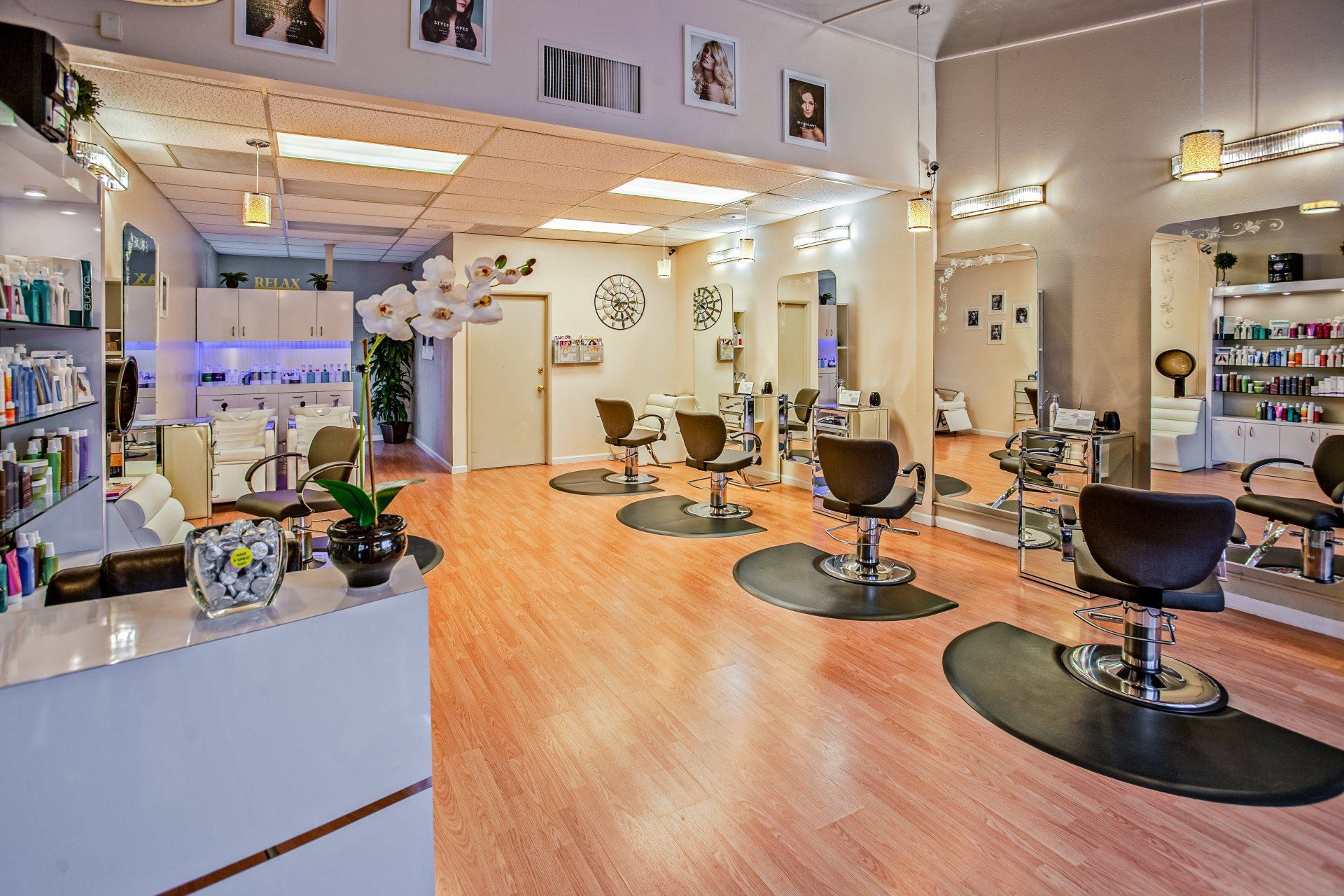
Beauty professionals, your artistry deserves to shine online! SMA Websites, part of Social Media Academy, understands the unique needs of the beauty sector. We'll help you create a stunning website without breaking the bank. WordPress for Beauty: WordPress is ideal for showcasing your portfolio and booking appointments. Its visual appeal and plugin flexibility are perfect for the beauty industry. Essential Pages: * Home: Display high-quality images of your work. * Services: Detail your treatments with clear descriptions and pricing. * Portfolio/Gallery: Showcase your best work with before-and-after photos. * Book Online: Integrate a booking plugin for easy appointment scheduling. * Testimonials: Feature glowing reviews from satisfied clients. Content Tips: * Use high-resolution images and videos. * Incorporate your brand's aesthetic throughout the site. * Highlight special offers and promotions. * Add a blog for beauty tips, and advice. * Make sure your site is mobile friendly, as most clients will find you on their phones. SMA Websites is here to help! We can provide a free consultation to help you create a website that's as beautiful as your work.

In today's digital age, a website is your online shop window. But don't let the thought of a complex, expensive website hold you back. At SMA Websites, part of Social Media Academy, we believe in starting small and growing smart. Why WordPress? WordPress is a fantastic platform for local businesses. It's user-friendly, scalable, and offers a vast array of free and affordable plugins. This means you can begin with a simple site and add features as your business expands. Starting Simple: Essential Pages: Home: Introduce your business, location, and key services. About Us: Share your story and build trust with your local community. Contact Us: Include your address, phone number, email, and a simple contact form. Services/Products: List what you offer with clear descriptions and pricing (if applicable). Content Tips: Use local keywords in your content to improve search engine visibility (e.g., "plumber Southport," "bakery Liverpool"). Include customer testimonials to build credibility. Add a Google Map to your contact page. Growing with WordPress: As your business grows, you can add features like online booking, e-commerce, and a blog. WordPress's flexibility allows you to adapt your website to your evolving needs. SMA Websites is here to help! We offer affordable consultations to guide you through the process. Let's build your digital doorstep together. Click here to arrange a chat with us
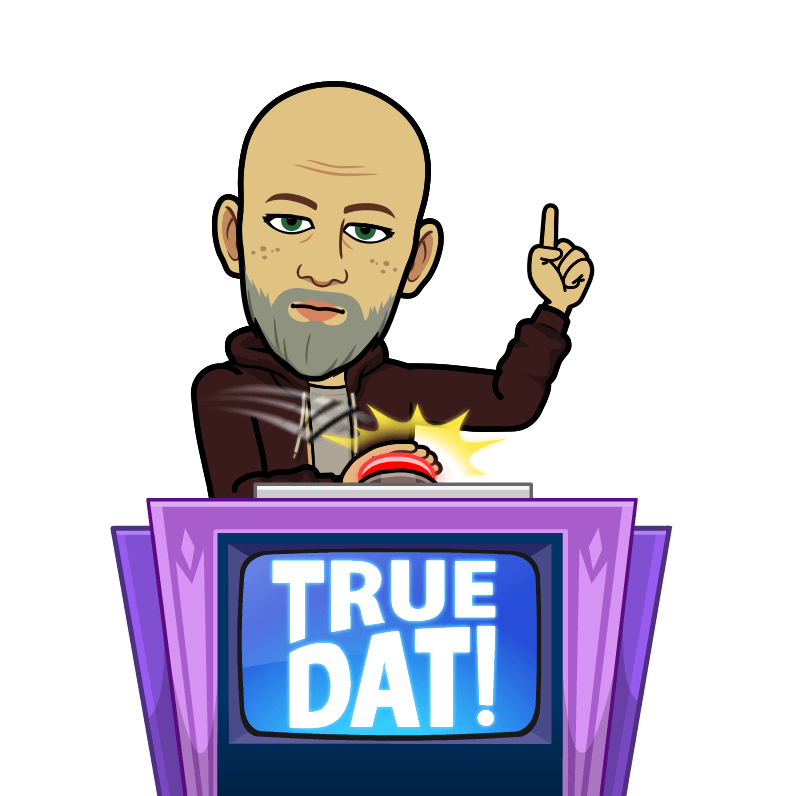
Alright, buckle up, because I'm about to drop some truth bombs. After 17 years in the social media trenches, I've seen it all. And here's the brutally honest reality: putting all your marketing eggs in the social media basket? That's a recipe for disaster, especially for small businesses. Look, I get it. Social media is shiny. It's where everyone seems to be, and those viral success stories are tempting as hell. But let's be real: relying solely on likes, shares, and fleeting trends is a shaky foundation for long-term growth. The Social Media Mirage: Don't get me wrong, social media is powerful. It can build brand awareness, connect you with customers, and drive traffic. But here's the catch: it's not a magic bullet. Algorithm Roulette: Those platforms change their algorithms more often than I change my socks. One day you're crushing it, the next your reach is practically zero. You're playing a game you can't control. Platform Dependency: What happens if your favorite platform suddenly implodes? Or if your account gets hacked? You're left scrambling. You don't own those platforms, you are merely a tenant. Vanity Metrics: Likes and followers don't pay the bills. Sure, they look good on paper, but are they translating into actual sales? Often, they're not. The Time Suck: Creating engaging content, interacting with followers, and staying on top of trends is a full-time job. Are you really spending your time on the most effective activities? The Small Business Reality: For smaller businesses, limited resources are your biggest challenge. Spreading yourself too thin across multiple platforms is a guaranteed way to burn out. Here's the Straight Talk: Diversify Your Marketing: Don't put all your eggs in one basket. Explore email marketing, local SEO, content marketing, and even (gasp!) offline strategies. Build Your Own Assets: Your website, your email list, your customer database – these are assets you control. Invest in them. Focus on Your Ideal Customer: Instead of chasing every shiny object, focus on the platforms and strategies that actually reach your target audience. Quality Over Quantity: A smaller, highly engaged audience is worth far more than a massive, passive one. Have a strategy: Do not just post for the sake of posting. Have a plan. My Honest Advice: Social media is a tool, not a solution. Use it wisely, but don't let it consume you. Focus on building a well-rounded marketing strategy that gives you control and delivers real results. Stop chasing vanity metrics and start building a sustainable business.

Alright, let's talk straight: if you're still juggling leads and customer info on spreadsheets and sticky notes, you're seriously holding your business back. It's time to ditch the chaos and get organized with a CRM system. Trust me, it'll change the game. Look, you're running a business, not a circus. You need a system that keeps everything in one place, so you're not constantly scrambling to find information. That's where a CRM comes in. Why the Mess Needs to Stop: Imagine having all your customer details, purchase history, and communication logs neatly organized. No more digging through emails or trying to remember who said what. This isn't just about tidiness; it's about efficiency and growth. Here's the Real Deal on CRMs: Everything in One Spot: Say goodbye to scattered data. A CRM puts all your customer info in one place, making it easy to see the big picture. This means you can tailor your approach and really understand your customers. Lead Management Made Easy: Stop losing leads! A CRM helps you track them through your sales process, so you know exactly where everyone stands. You can automate follow-ups and prioritize your efforts, making sure no opportunity slips through the cracks. Better Customer Conversations: Keep track of every interaction, whether it's an email, a phone call, or a social media message. This means you can have meaningful, personalized conversations every time. Automation That Works: Automate those repetitive tasks, like sending out follow-up emails or scheduling appointments. This frees up your time so you can focus on what really matters: growing your business. Insights You Can Use: Get real data on your customers and sales. See what's working and what's not, so you can make smarter decisions. Stronger Customer Bonds: By having all the information you need, you can build stronger, more lasting relationships with your customers. Choosing Your CRM: Don't just grab the first CRM you see. Take some time to find one that fits your business. Think about: How easy it is to use. Whether it works with your other tools. If you can customize it to your needs. If it will grow as your business does. Our Honest Advice: Don't wait until you're completely overwhelmed. Implement a CRM now and start seeing the difference. It's an investment in your business, and it's one you won't regret. Remember, organisation isn't just about being tidy. It's about being smart. And a CRM is one of the smartest tools you can have.
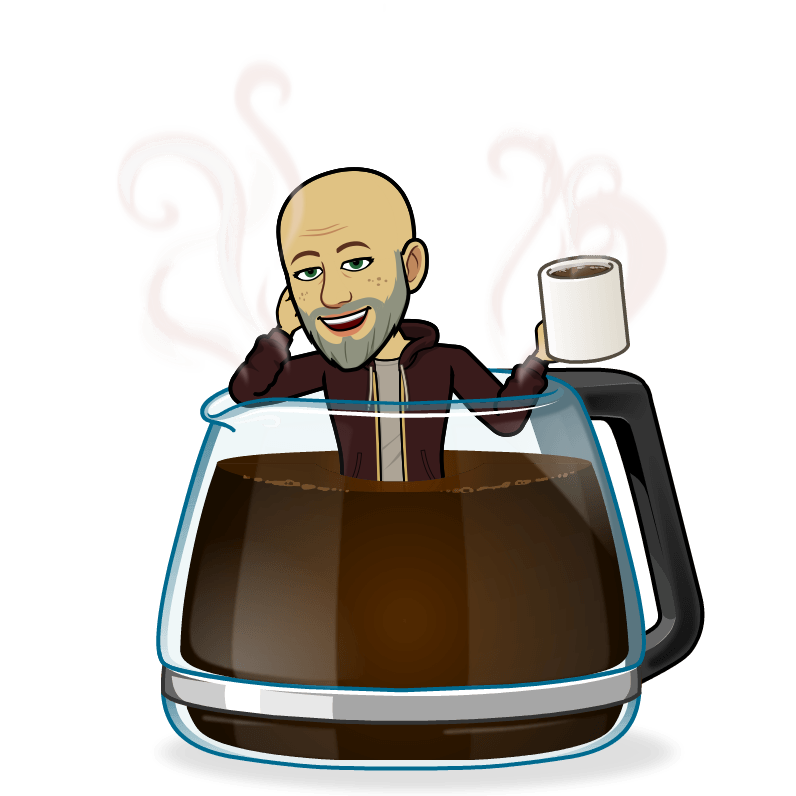
Today we're tackling a common hospitality hurdle: how to stand out when your core product (in this case study coffee) is essentially the same as everyone else's. Look, we all know there are only so many ways to roast a bean. But that's not what truly matters. It's about the experience. It's about creating a space where people feel connected, inspired, and genuinely happy. It's about niching down and becoming the go-to spot for a specific group of people. Why "Same Coffee" Doesn't Matter (When You Niche Right): People don't just buy products; they buy experiences and connections. If you focus on creating a unique atmosphere and catering to a specific niche, your coffee becomes secondary. Our No-Nonsense Guide to Niching Your Coffee Shop: Define Your Vibe: What kind of atmosphere do you want to create? Cozy and quiet? Vibrant and social? Artsy and eclectic? Identify Your Tribe: Who are your ideal customers? Students? Freelancers? Artists? Dog lovers? Families? Curate a Unique Ambiance:Decor: Use decor that reflects your vibe and target audience. Think comfy armchairs, local art, or a dedicated workspace. Music: Create a playlist that sets the mood. Chill beats, indie tunes, or classic jazz? Smell: Beyond the coffee, consider subtle scents that enhance the experience. (e.g., cinnamon, vanilla). Offer Unique Experiences:Workshops: Host coffee brewing classes, art nights, or book clubs. Events: Organize live music, poetry readings, or open mic nights. Themed Days: Have "Dog-Friendly Mondays" or "Freelancer Fridays" with special offers. Build Community: Create a loyalty program that rewards regulars. Host meetups and social events. Engage with customers on social media. Focus on the Details: Exceptional customer service. High-quality pastries and snacks. Free Wi-Fi and comfortable seating. Examples in Action: Instead of a generic coffee shop: A coffee shop that caters to freelancers, with dedicated workspaces, fast Wi-Fi, and a quiet atmosphere. Instead of a generic coffee shop: A coffee shop that's dog-friendly, with water bowls, treats, and a welcoming atmosphere for pets. Instead of a generic coffee shop: A coffee shop that's a hub for local artists, featuring rotating art displays, live music, and open mic nights. Instead of a generic coffee shop: A coffee shop that specialises in fair trade and ethically sourced products, and educates it's customers on the process. Content Strategy for Your Niche: Social Media: Showcase the unique atmosphere and events. Share customer stories and testimonials. Run contests and giveaways. Use behind the scenes photos of staff, and the creation of products. Website: Highlight the unique experiences and events. Tell your brand story and values. Showcase customer reviews and photos. Email: Send out newsletters with event announcements and special offers. Share behind-the-scenes glimpses and customer spotlights. Offer exclusive discounts to loyal customers. Our Straight-Up Takeaway: Your coffee might be the same, but your coffee shop doesn't have to be. It's all about creating a unique experience and building a community. Find your niche, create a vibe, and watch your customers become loyal fans.

Today we're talking about how independent retailers can thrive by niching down. Look, competing with big chains on price and sheer volume is a losing game. You need to offer something unique, something special, something that speaks directly to a specific customer. Forget the "we sell everything" approach. Let's get real about finding your niche and building a loyal community around it. Why Niching Is Your Indie Retail Superpower: People are craving authenticity and connection. They want to support businesses that reflect their values and interests. By niching, you become the go-to destination for a specific group of customers, building a strong, loyal following. Our No-Nonsense Guide to Niching for Indie Retail: Identify Your Passion: What are you truly passionate about? What products or experiences do you genuinely love? This passion will shine through and attract like-minded customers. Know Your Community: What are the unique needs and interests of your local community? Are there any gaps in the market that you can fill? Curate a Unique Selection: Don't just stock the same products as everyone else. Source unique, handcrafted, or locally made items that reflect your niche. Create an Experience: Turn your shop into a destination. Offer workshops, events, or demonstrations that cater to your niche. Build a Community: Connect with your customers on a personal level. Create a welcoming atmosphere where they feel valued and appreciated. Go Digital, But Keep It Personal: Use social media and email to connect with your customers, but don't lose the personal touch. Share stories, behind-the-scenes glimpses, and customer spotlights. Examples in Action: Instead of a general gift shop: A shop specializing in locally made artisan candles and home fragrances. Instead of a general clothing boutique: A shop focusing on sustainable and ethically made clothing for outdoor enthusiasts. Instead of a general bookstore: A shop specializing in rare and vintage cookbooks, hosting regular cooking demonstrations. Instead of a general food store: A store specialising in locally sourced cheeses and wines, hosting regular tasting events. Content Strategy for Your Niche: Website: Showcase your unique products and tell your brand story. Create blog posts about your niche, offering tips and insights. Highlight local suppliers and artisans. Social Media: Share high-quality photos and videos of your products and shop. Run contests and giveaways to engage your audience. Go live to showcase new products or host Q&A sessions. Showcase behind the scenes of you sourcing products, or creating products. Email: Send out newsletters with exclusive offers and event announcements. Share customer stories and testimonials. Provide personalized recommendations based on customer preferences. Our Straight-Up Takeaway: Niching isn't about limiting your potential; it's about focusing your efforts and becoming the go-to destination for your ideal customers. It's about building a community, creating an experience, and offering something truly unique. So, find your niche, embrace your passion, and watch your independent retail business thrive!

You can't be everything to everyone, especially online. You need to speak directly to your ideal client, so that they can find relatable content and start to build trust in your brand. In this case study, we are looking at a beauty clinic that does makeup, aesthetics, nails, hair – you name it. But now, they're flipping the script and focusing on teen acne. This isn't just about clearing skin; it's about building confidence. And that's where your content comes in. My No-Fluff Approach to Content for This Niche: First off, let’s get into the mindset of a teenager. They are worried about their skin, they are worried about what people think of them, and they are worried about how to fix it. 1. Website Content: Your Acne Confidence Hub Landing Page: Dedicated to teen acne solutions. Use language that resonates: "Clear Skin, Confident You," "Your Journey to Radiant Skin Starts Here." Blog Posts: "The Ultimate Guide to Teen Acne: Causes, Treatments, and Tips." "Skincare Routines for Teens: Simple Steps to Clear Skin." "How Acne Affects Confidence (and How to Get It Back)." "Debunking Common Acne Myths Teens Believe." "Teen-Friendly Makeup Tips for Acne-Prone Skin." Before & After Photos: Real, relatable transformations. (With parental consent, of course!) FAQ Section: Address common concerns: "Will it hurt?" "How long will it take?" "Is it expensive?" Teen Testimonials: Video or written. Social proof is powerful. 2. Email Content: Direct & Supportive Welcome Series: After sign-up, send a series of emails with skincare tips, confidence boosters, and clinic information. Educational Emails: Share blog posts, product recommendations, and expert advice. Success Stories: Highlight client transformations and confidence journeys. Exclusive Offers: Teen-specific discounts and packages. Confidence Boosters: Send motivational quotes, positive affirmations, and tips for self-care. 3. Social Media Content: Engaging & Relatable Instagram/TikTok: Short, educational videos: "30-Second Skincare Hacks," "Myth vs. Fact." Behind-the-scenes: Show the clinic's friendly, welcoming atmosphere. "Ask Me Anything" sessions with skincare experts. Relatable memes and GIFs: Humour can break down barriers. Teen-focused polls and quizzes: "What's your biggest skincare struggle?" User-generated content: Encourage teens to share their skincare journeys. Facebook: Longer blog posts and articles. Live Q&A sessions with experts. Parent-focused content: Address their concerns and offer advice. Community building: Create a supportive group for teens and parents. My Straight-Up Advice: This isn't just about selling treatments; it's about building trust and empowering teens. Use authentic language, address their concerns, and show them that you genuinely care. By talking directly to this niche, you build a loyal customer base, and become the go to clinic for teenage acne. This is a case study but the same applies to ALL businesses in ALL sectors.

Today we're tackling something I see so many small businesses mess up: trying to be everything to everyone. Look, I get it, you want to get as much business as possible, right? But trust me on this, spreading yourself too thin is a recipe for disaster. Let's take a photographer, for example. I see so many who do weddings, corporate events, sports, you name it. They're trying to catch every single fish in the sea. But here's the thing: you end up being mediocre at everything instead of amazing at one thing. Why Niching Is Your Secret Weapon: Think about it, if you're a potential bride, are you going to hire the photographer who also shoots football matches, or the one who exclusively does weddings? Exactly. People want specialists. They want someone who understands their specific needs inside and out. My Real-Talk Advice on Niching: Pick a Lane!: Seriously, choose one thing you're really good at and passionate about. For our photographer, let's say it's weddings. Become the Expert: Once you've niched, go all in. Learn everything there is to know about wedding photography. Style, trends, posing, everything. Speak Their Language: Use the words your ideal client uses. For brides, that's things like "dreamy," "romantic," "timeless." Build a Dedicated Space: This is HUGE! Create a landing page specifically for wedding photography. Show off your best work, testimonials, and packages. Make it scream "wedding expert." Find Your Tribe: Join wedding groups on Facebook. Share your work, offer advice, and engage with potential clients. Don't just spam them with ads! Show Off Your Stuff: Use social media to showcase your wedding photography. Behind-the-scenes, client stories, the lot. Let's Break It Down: Our photographer, who now focuses solely on weddings, builds a stunning landing page. It's got gorgeous photos, client testimonials, and clear pricing. They join local wedding groups on Facebook, share tips, and post photos of their work. Suddenly, they're not just another photographer; they're the wedding photographer. My Straight-Up Takeaway: Niching isn't about limiting yourself; it's about focusing your energy where it matters most. It's about becoming the go-to expert in your field. Trust me, you'll get more business by being amazing at one thing than by being average at everything. So, what are you waiting for? Find your niche, build your platform, and start attracting your ideal clients.
